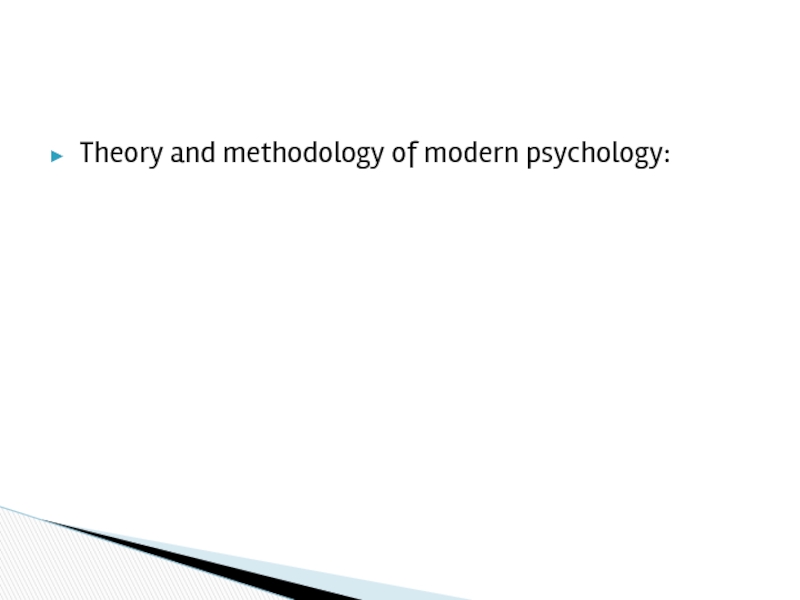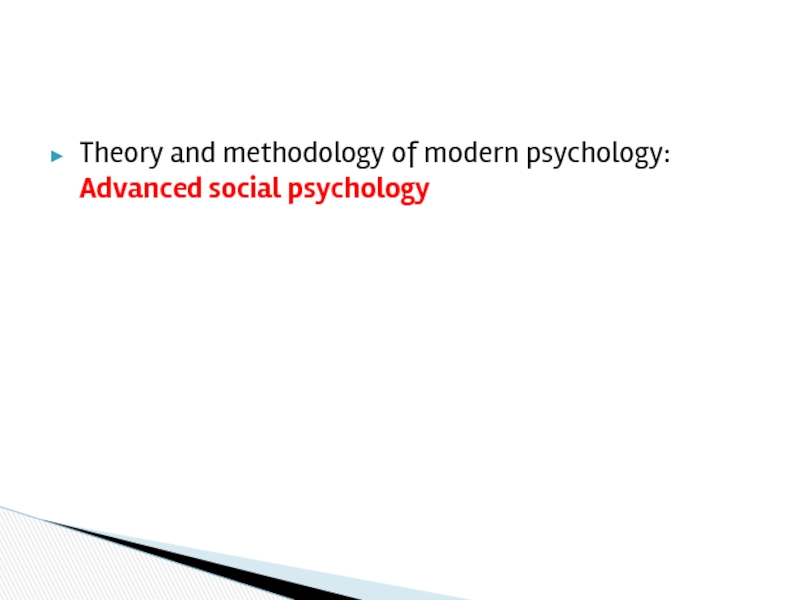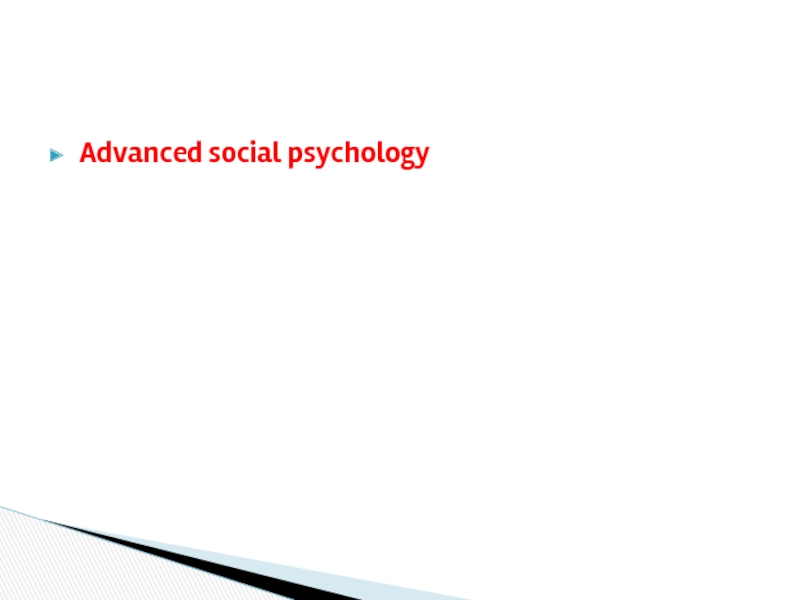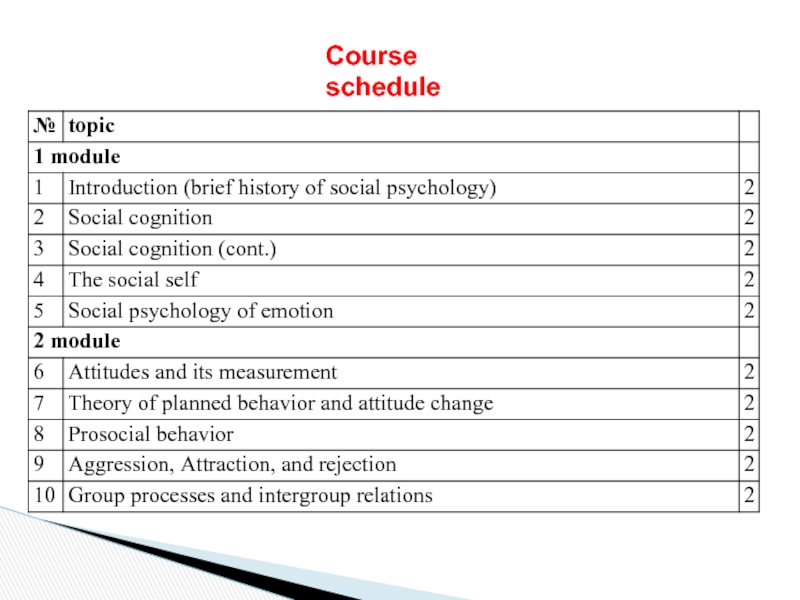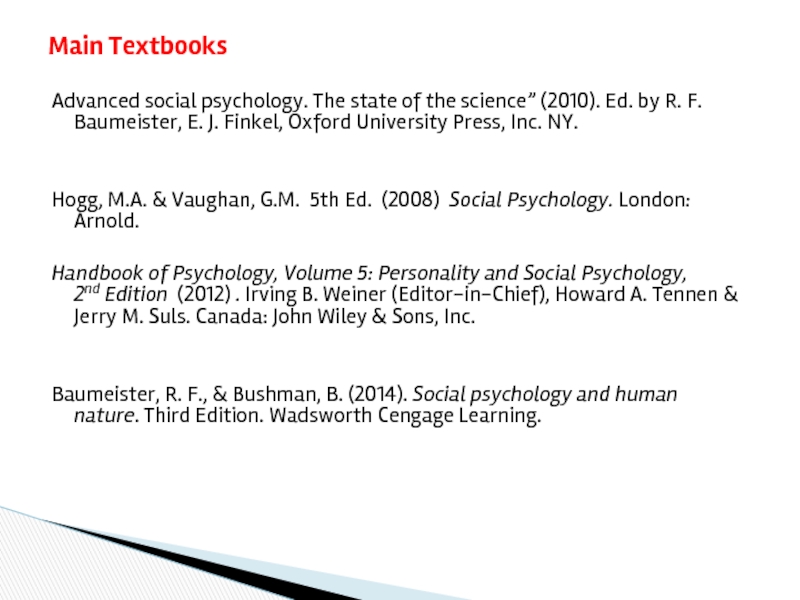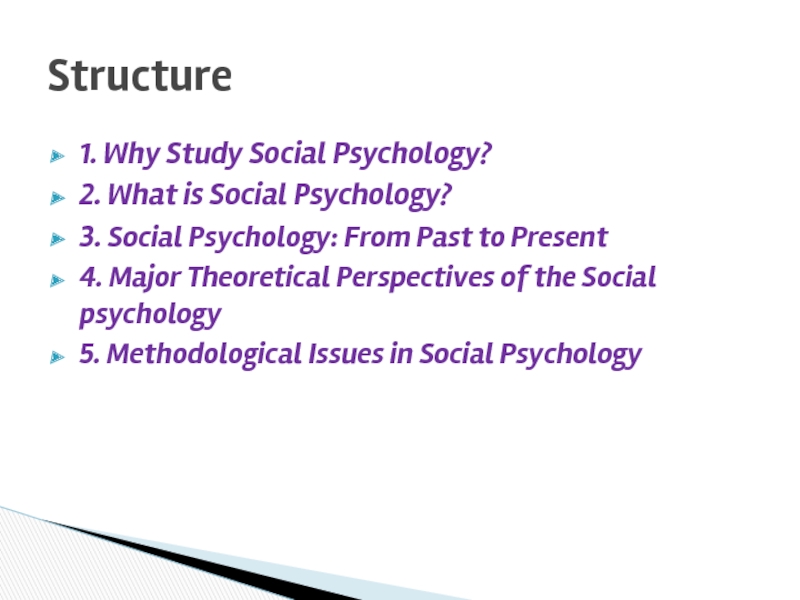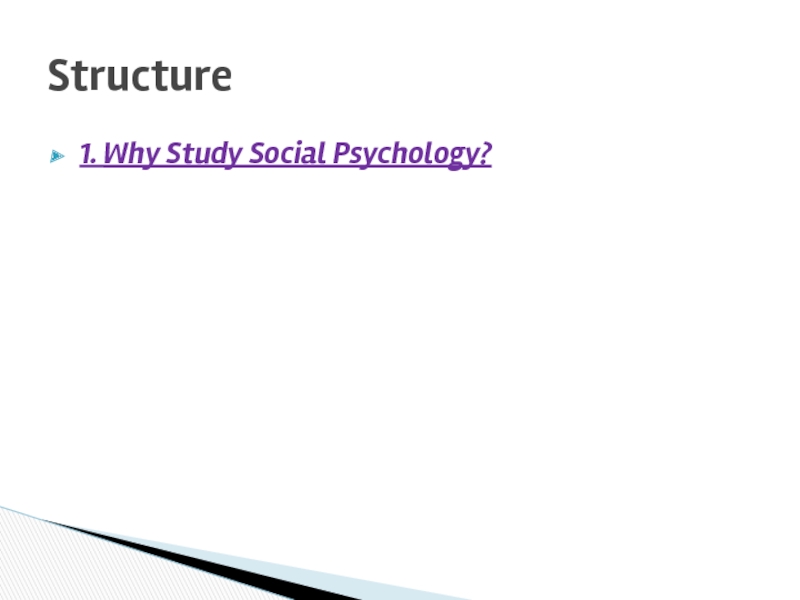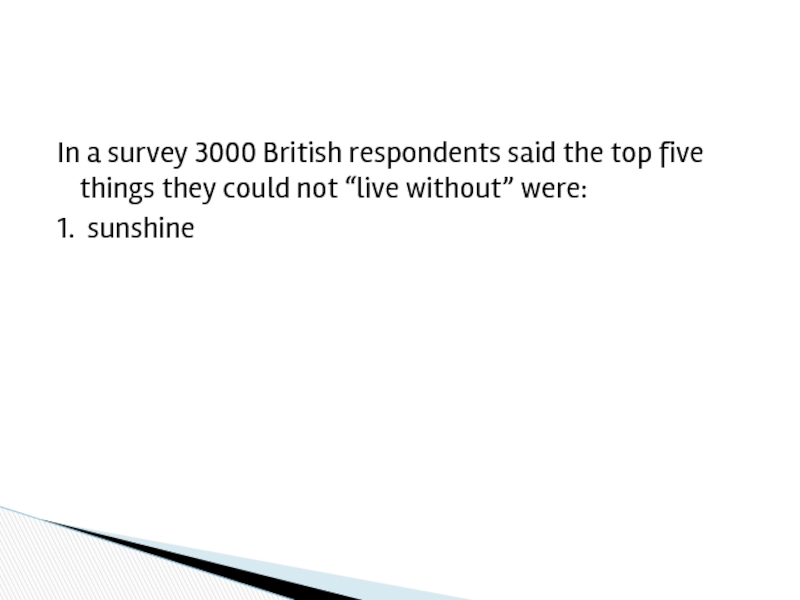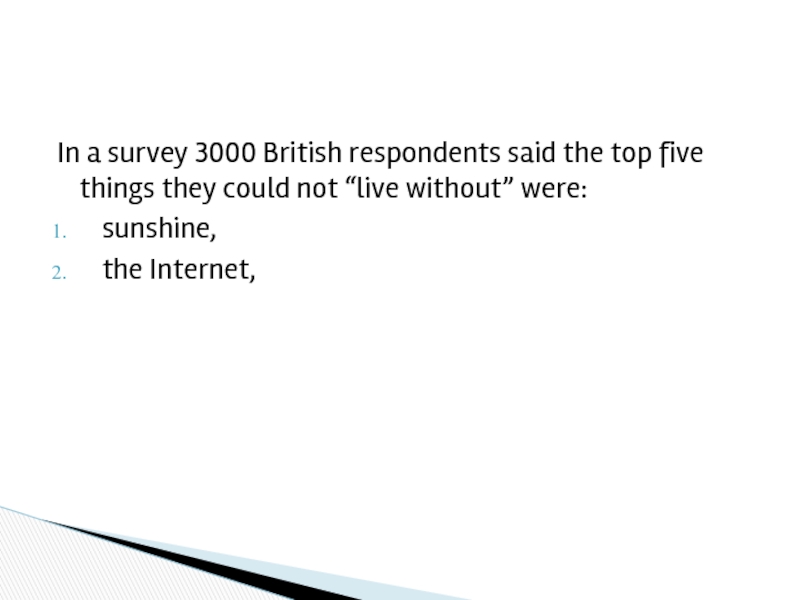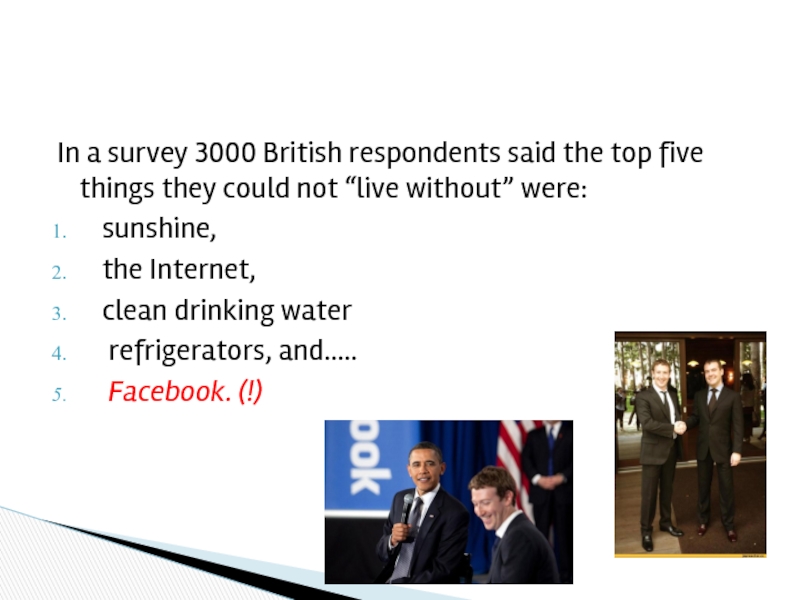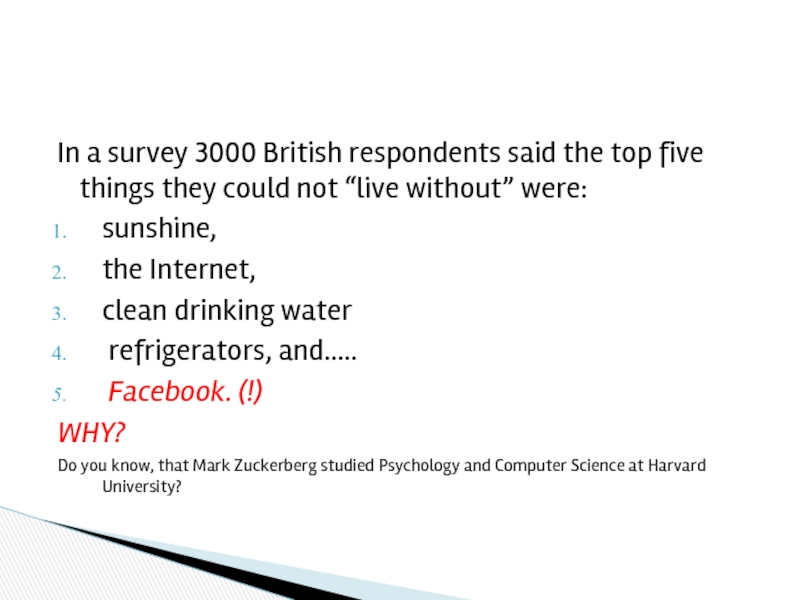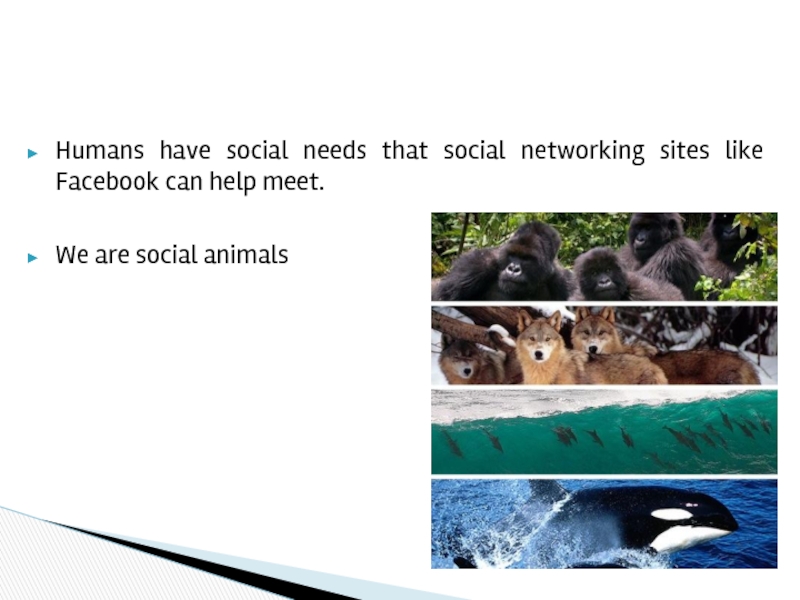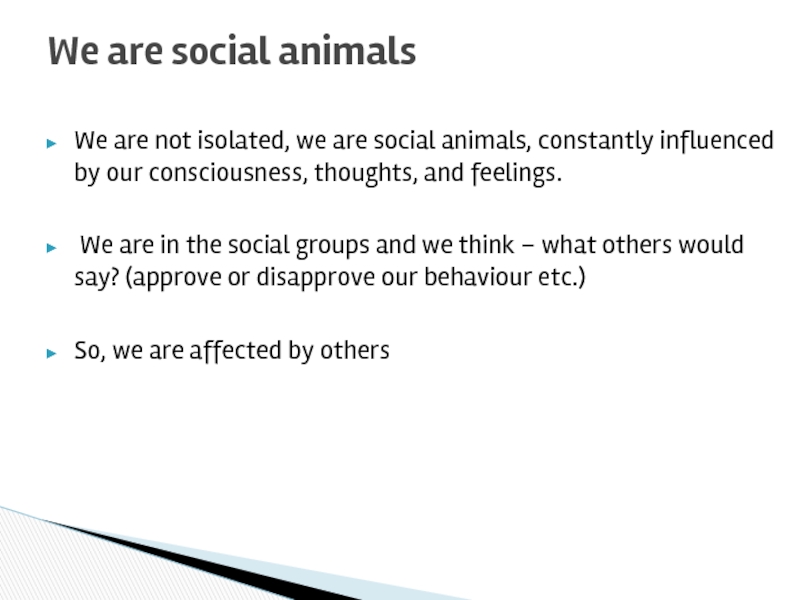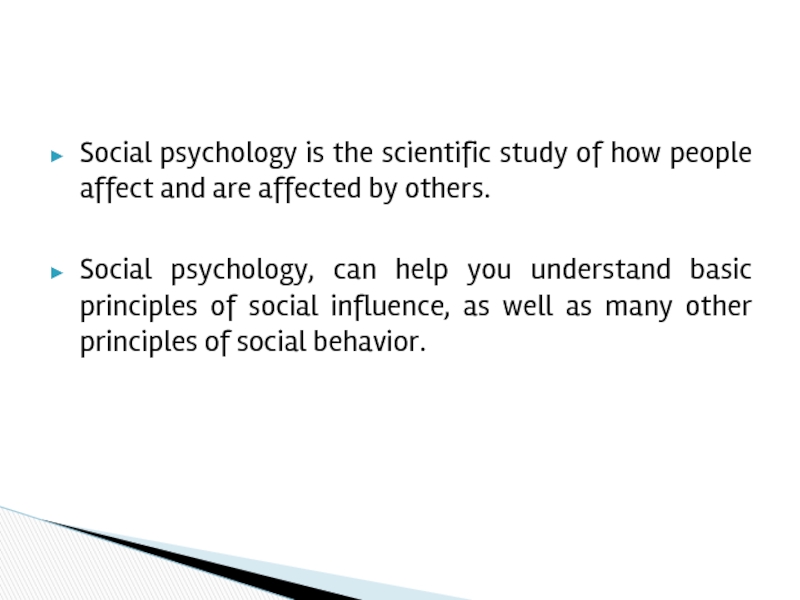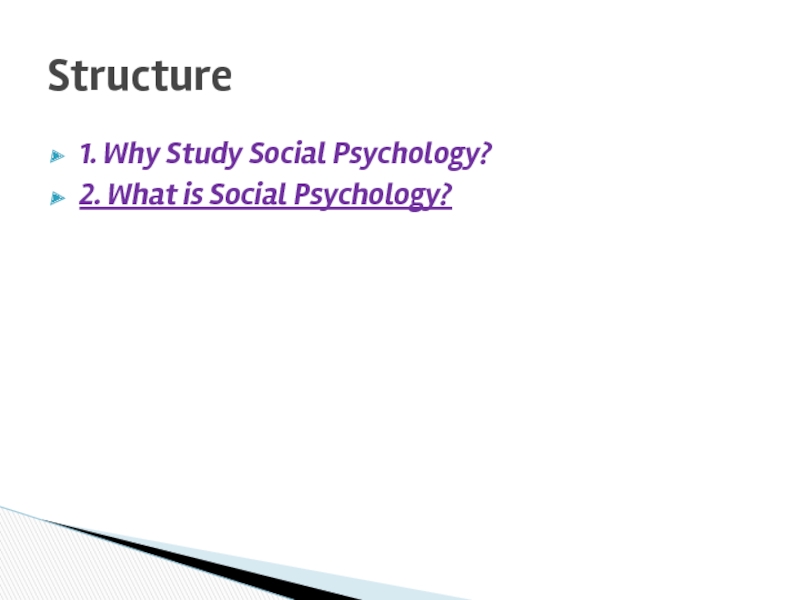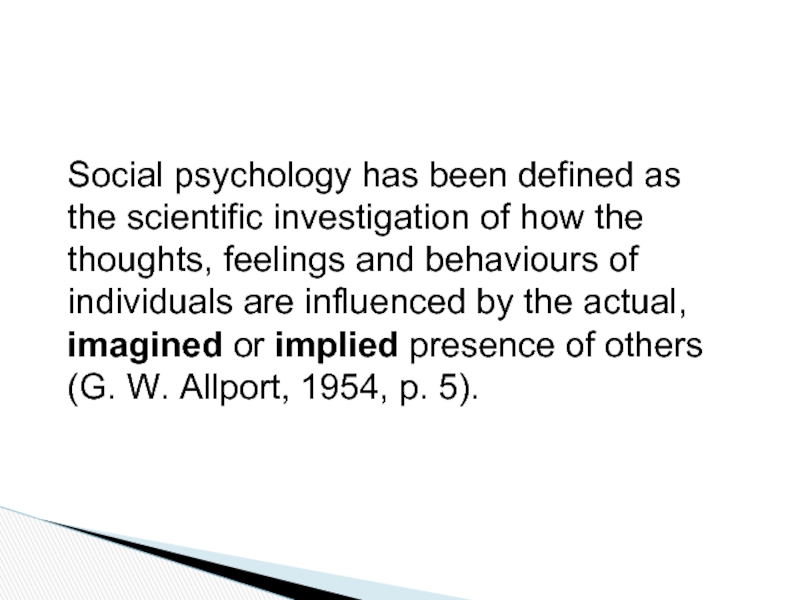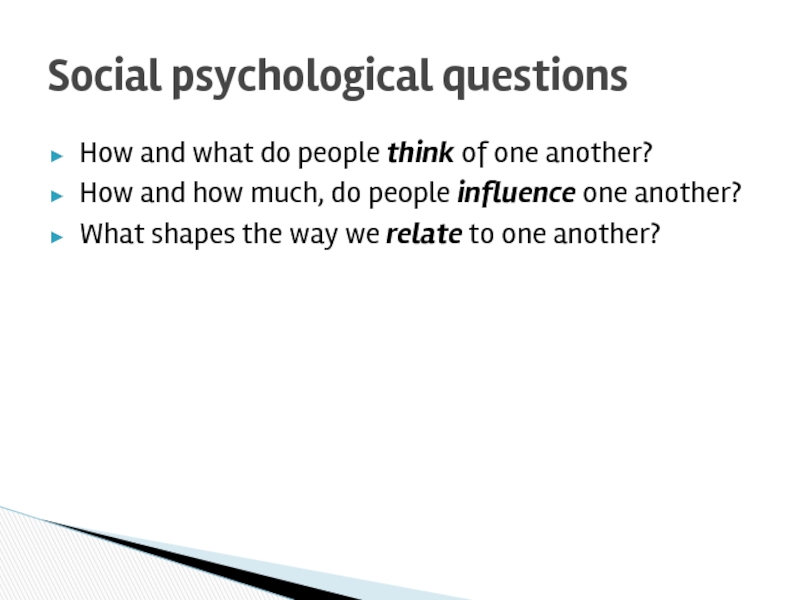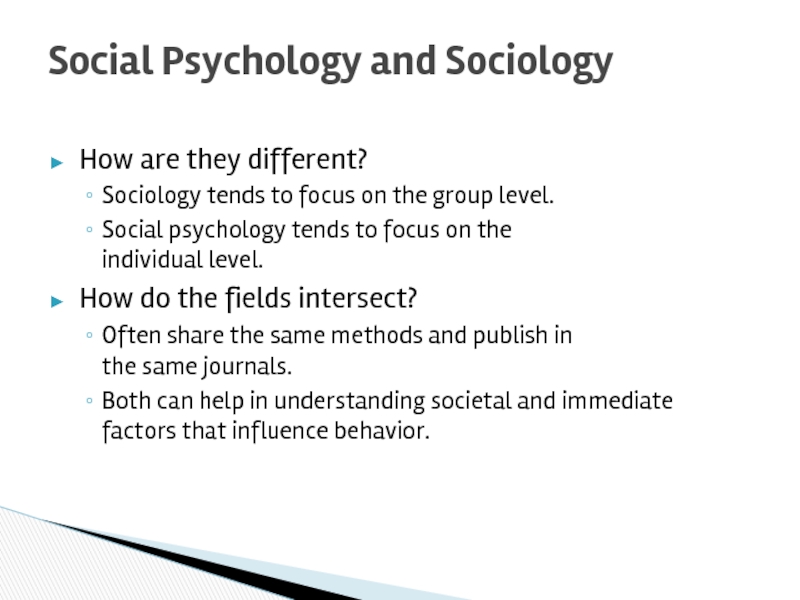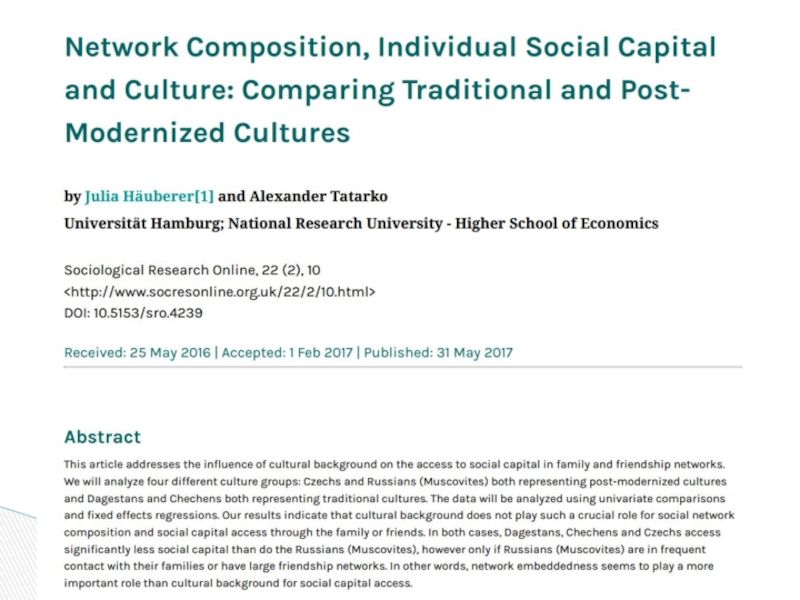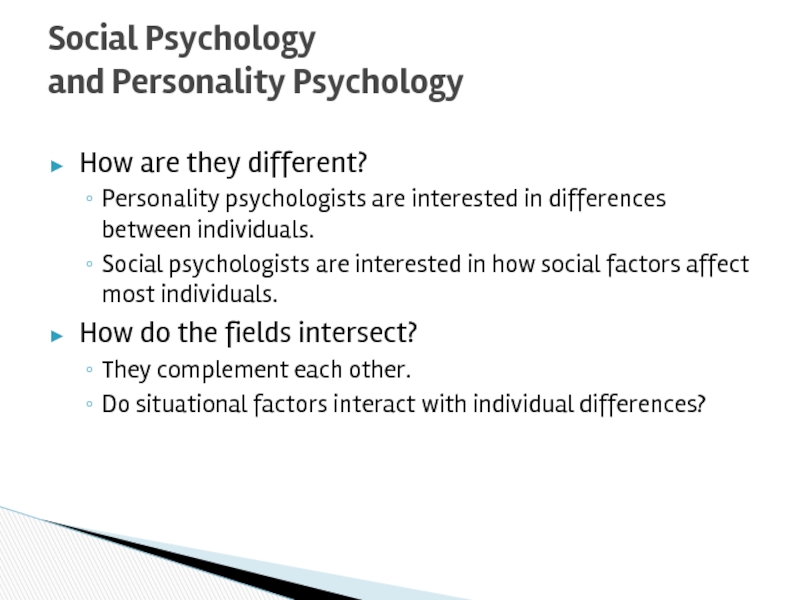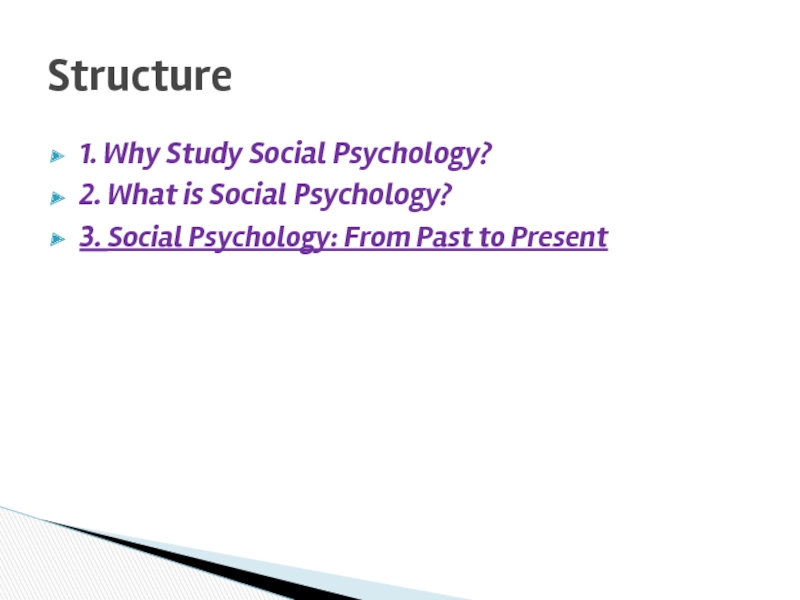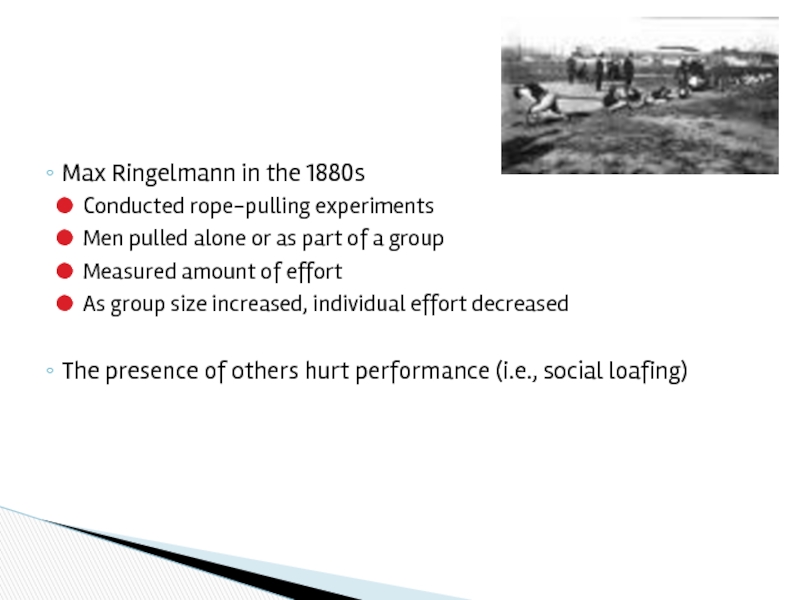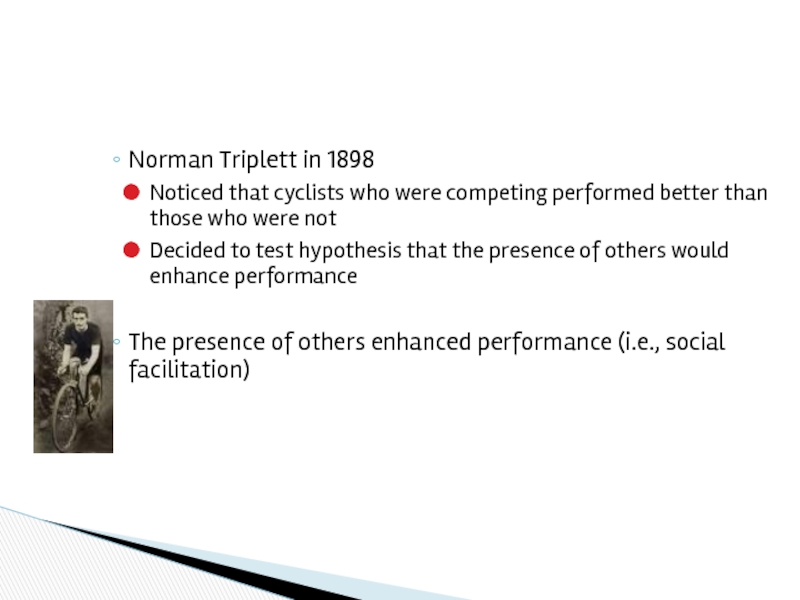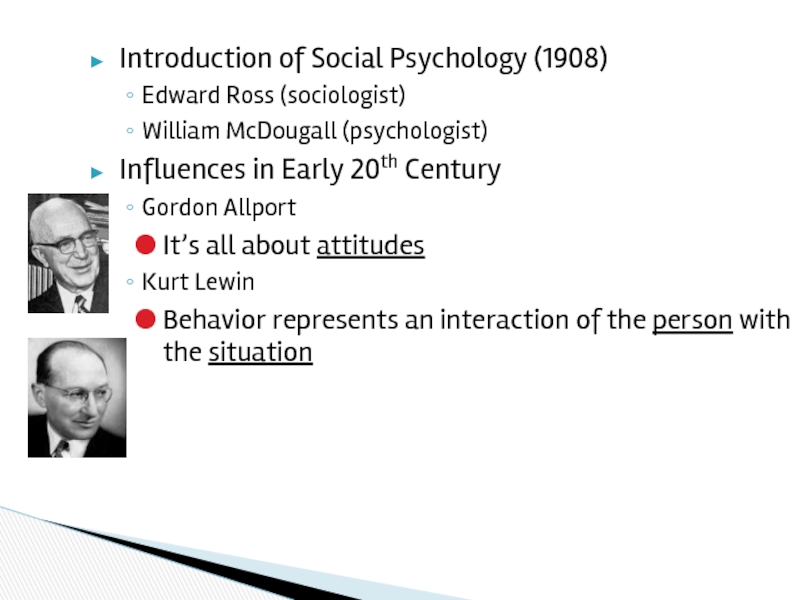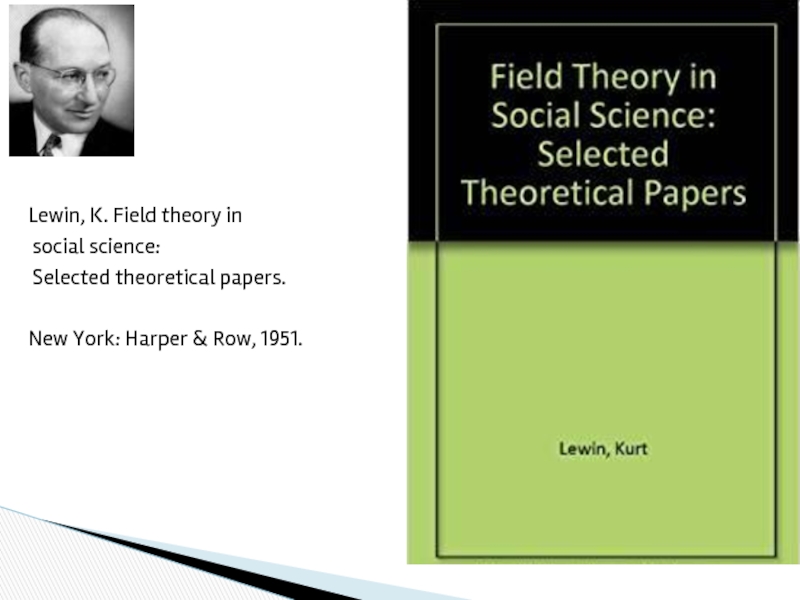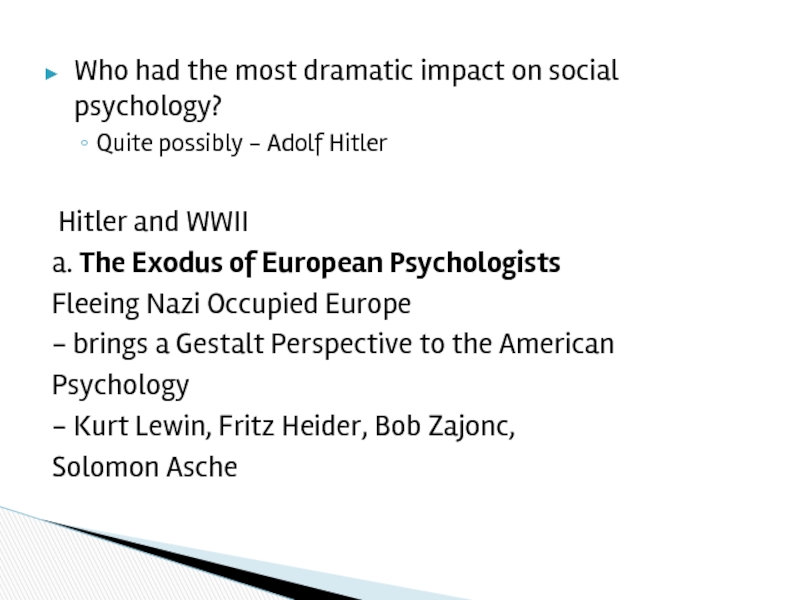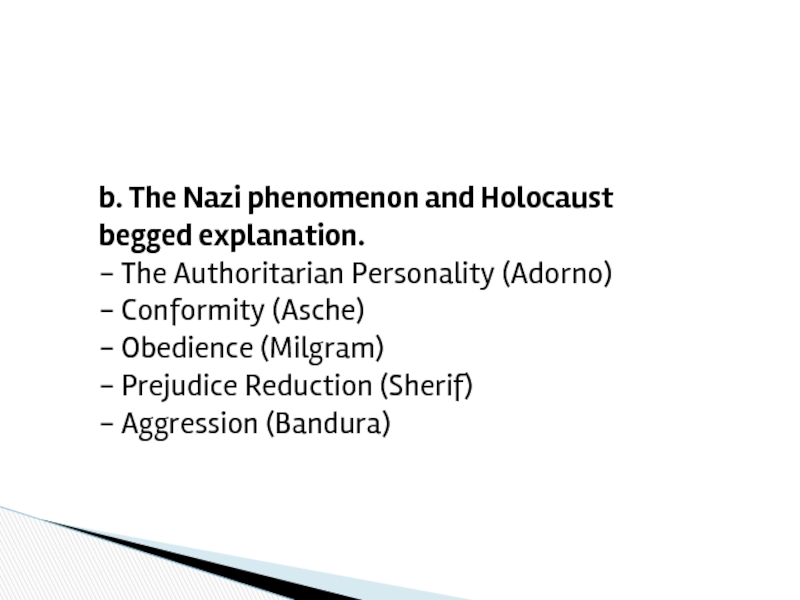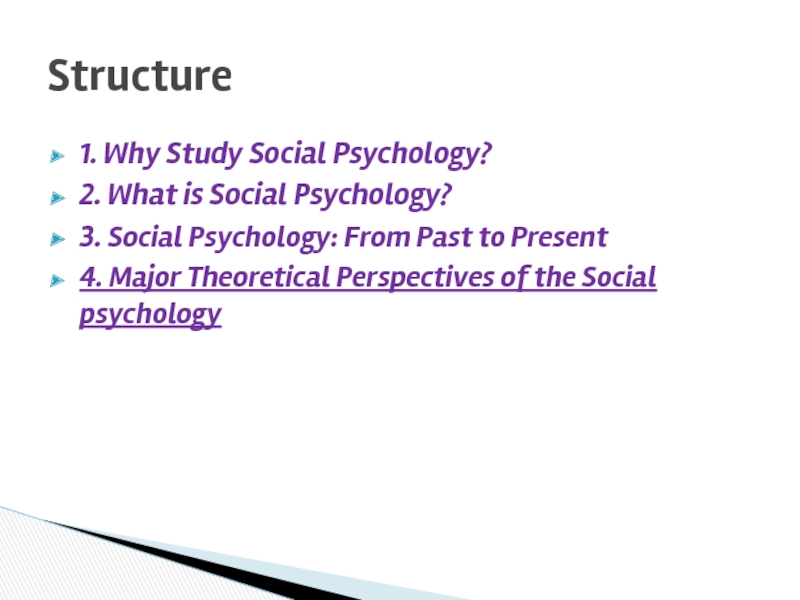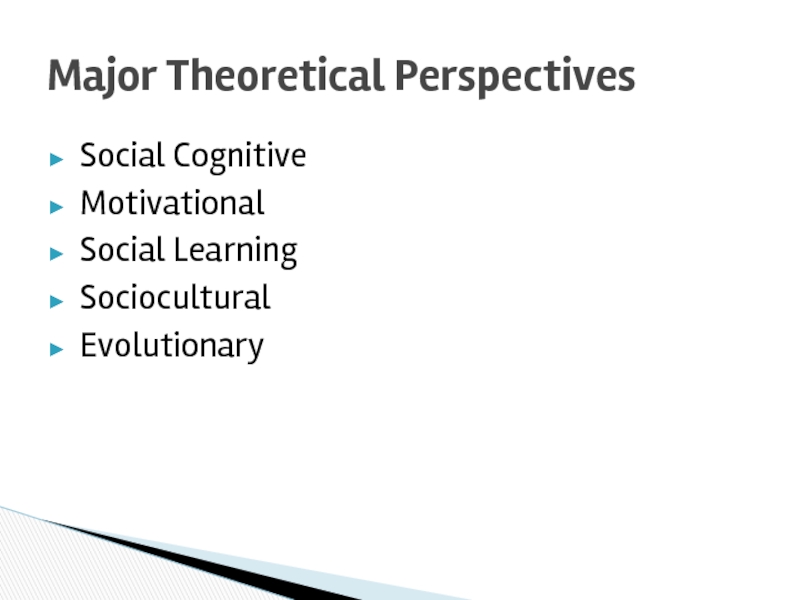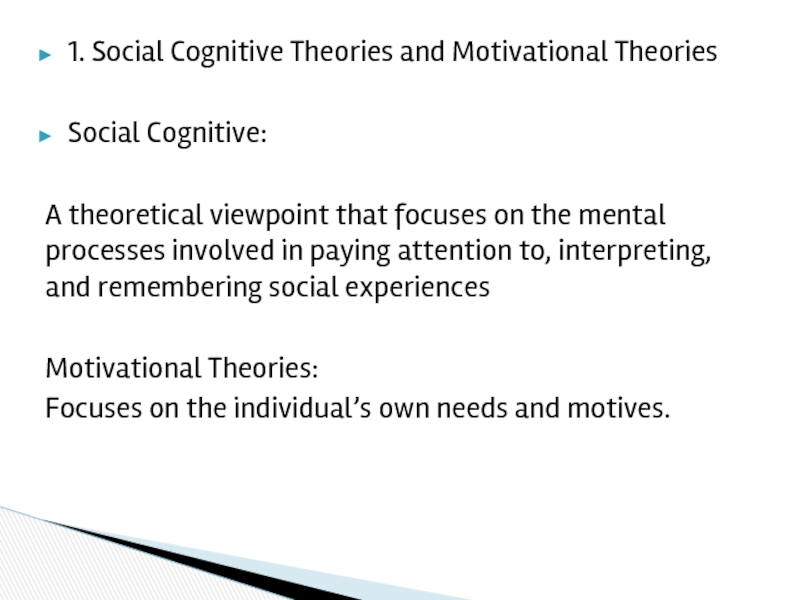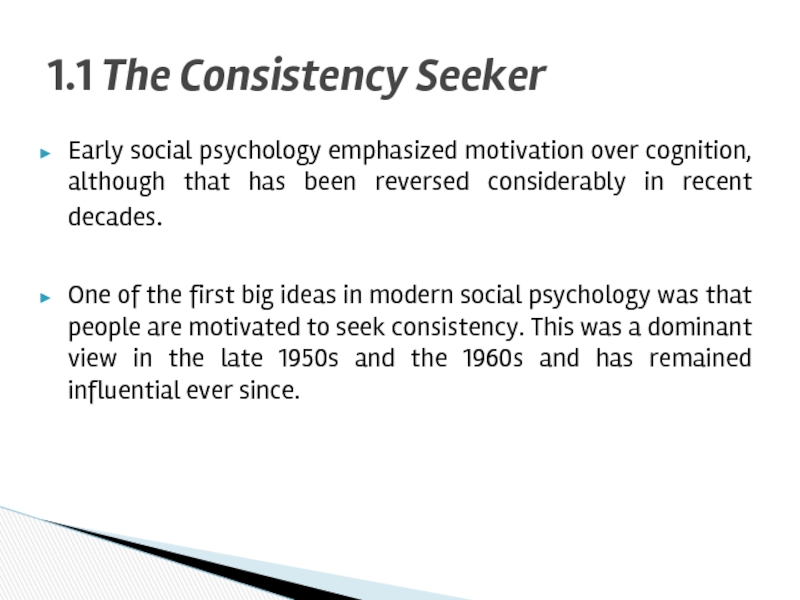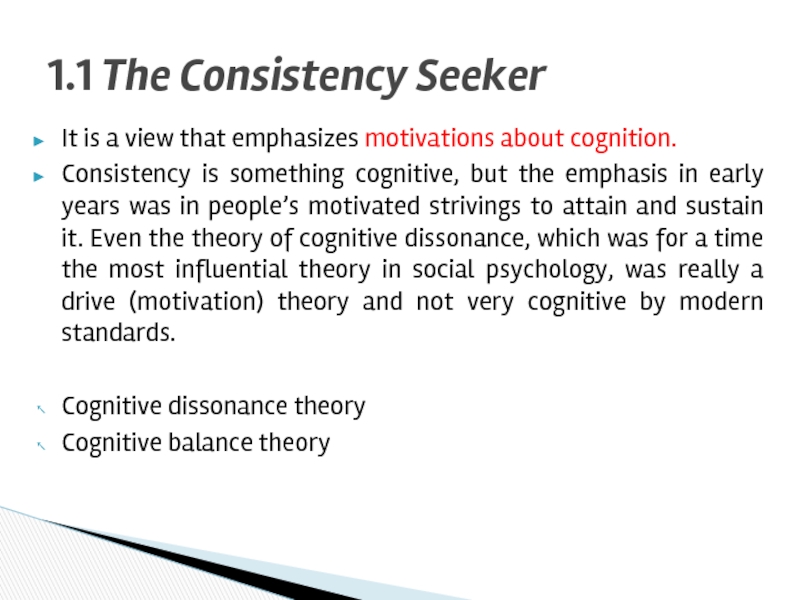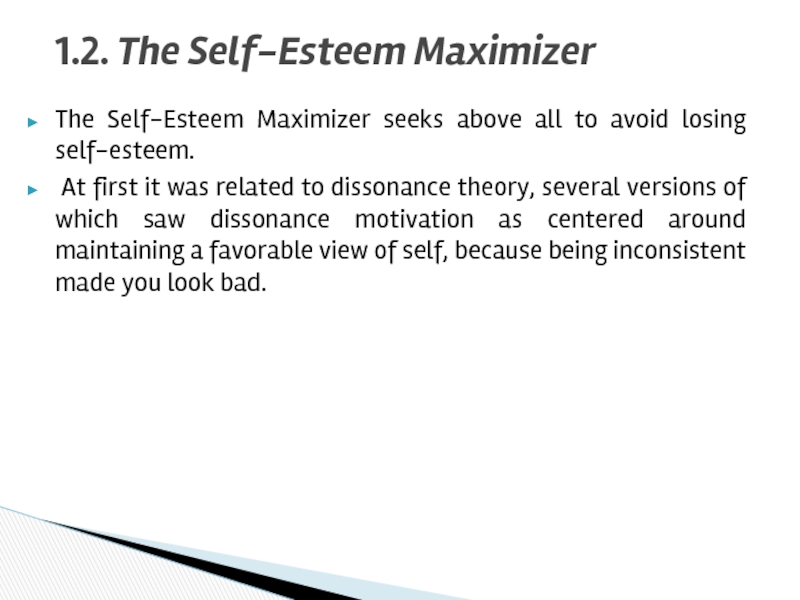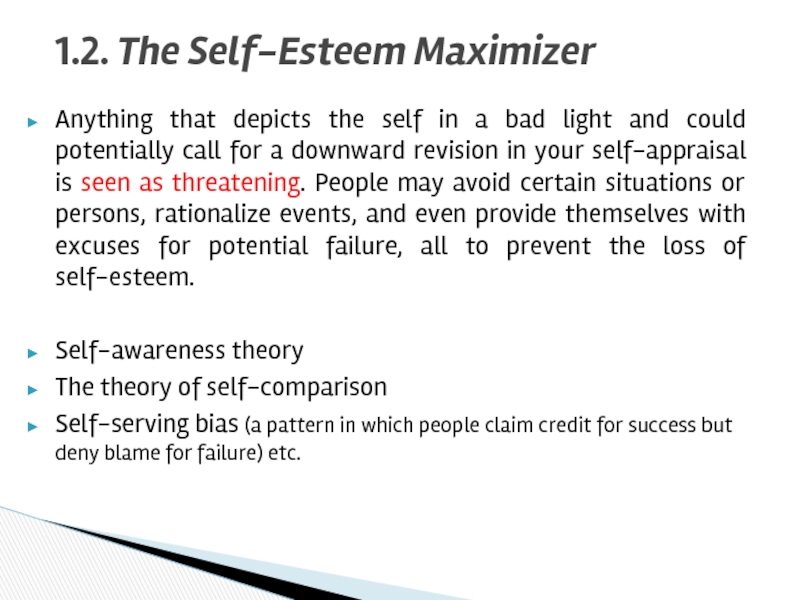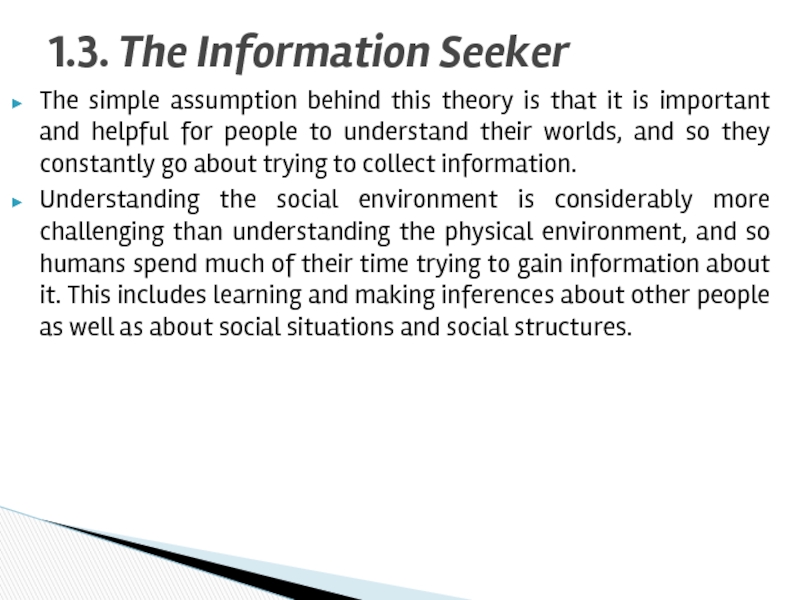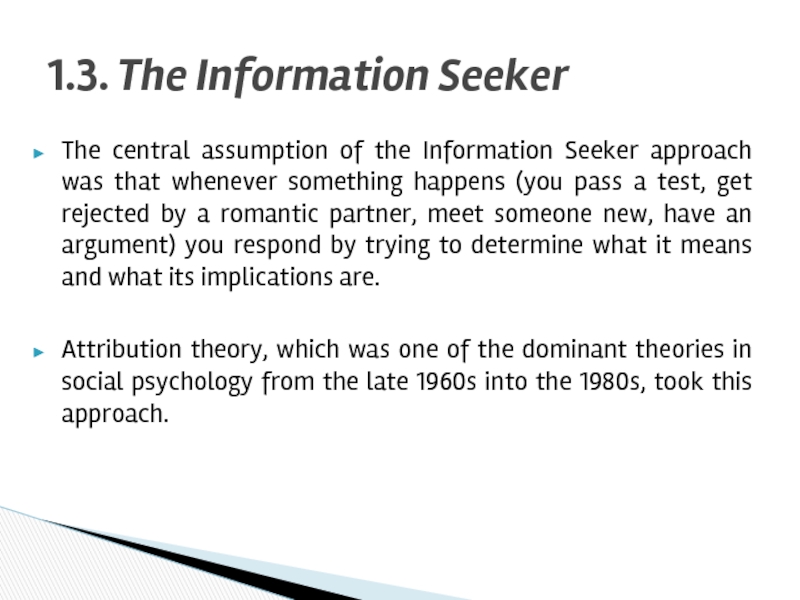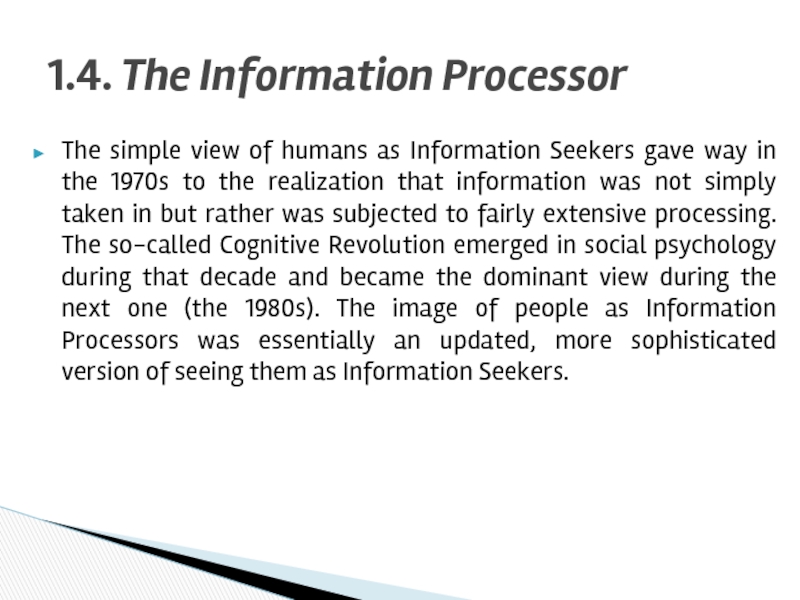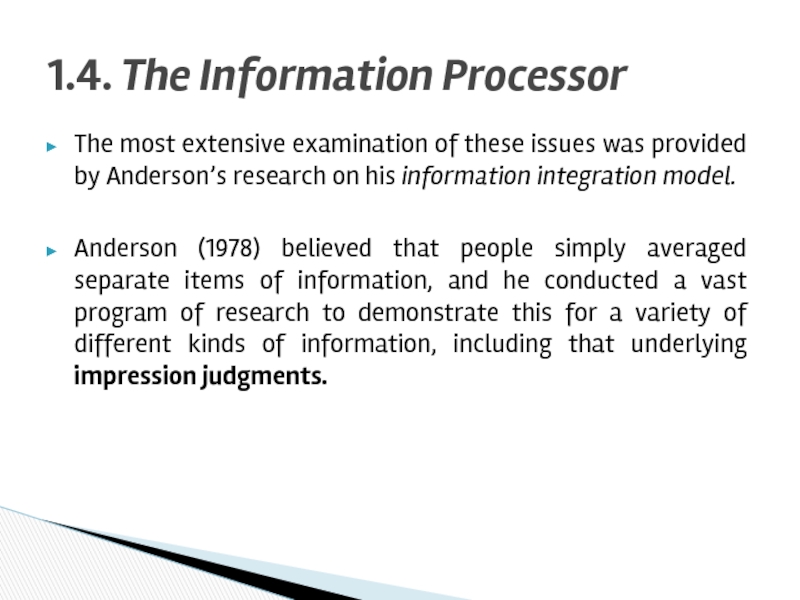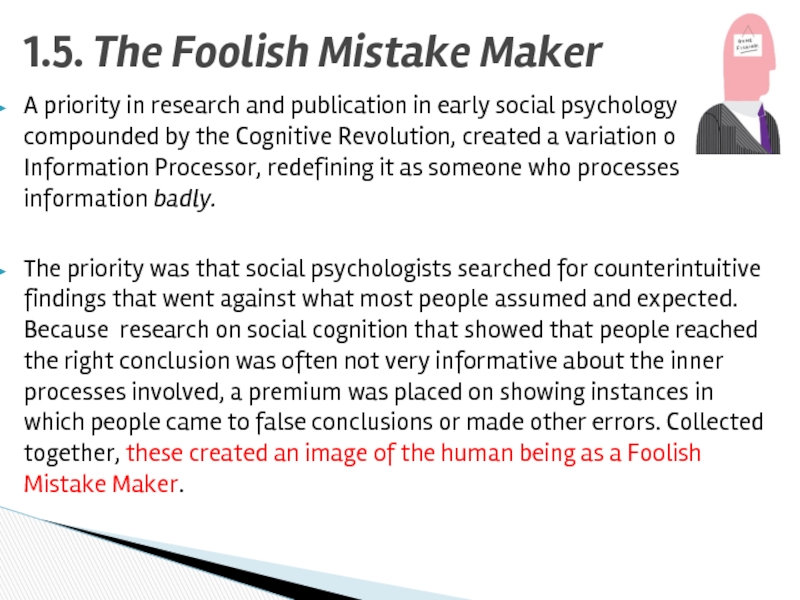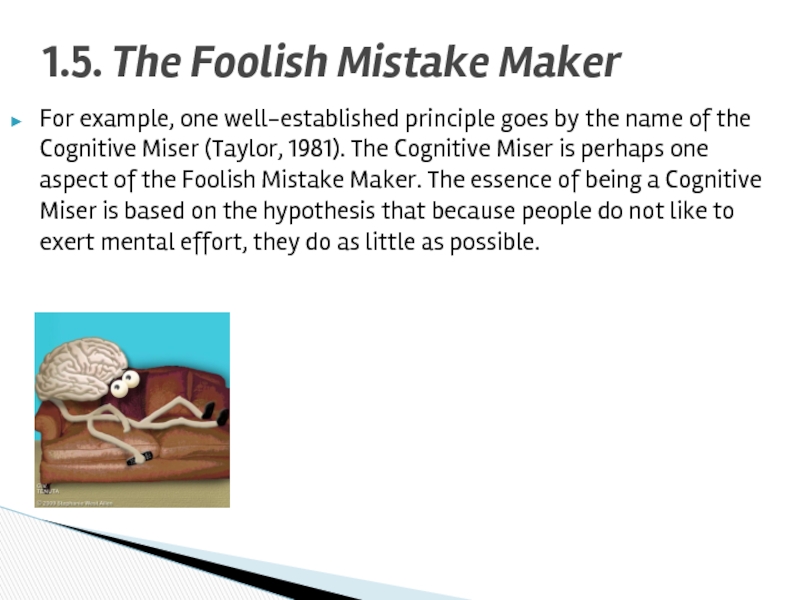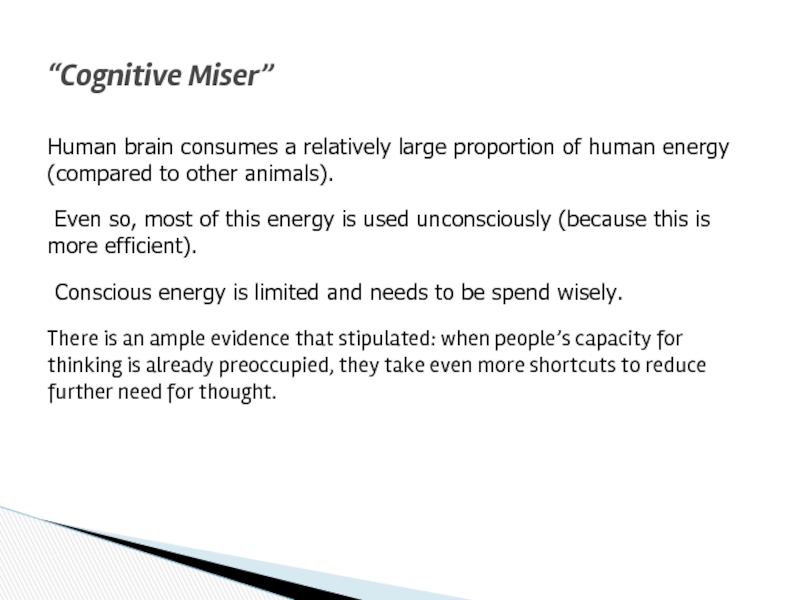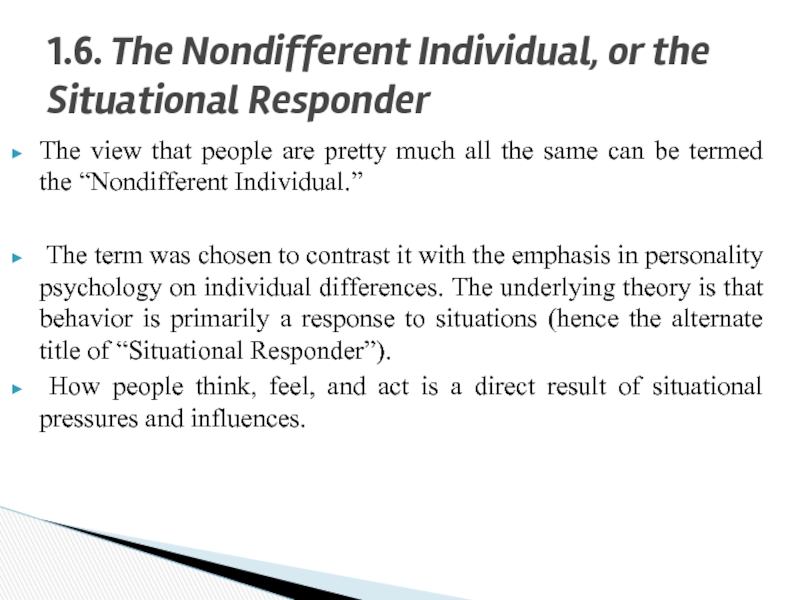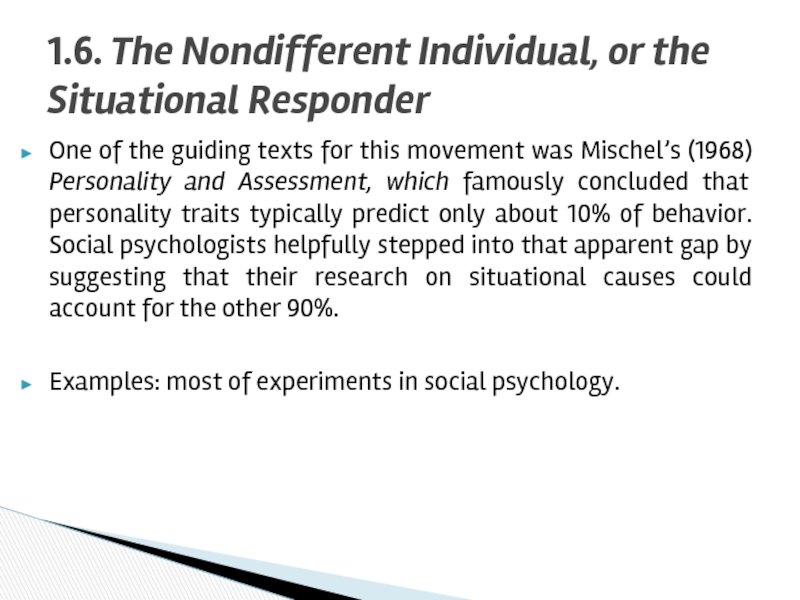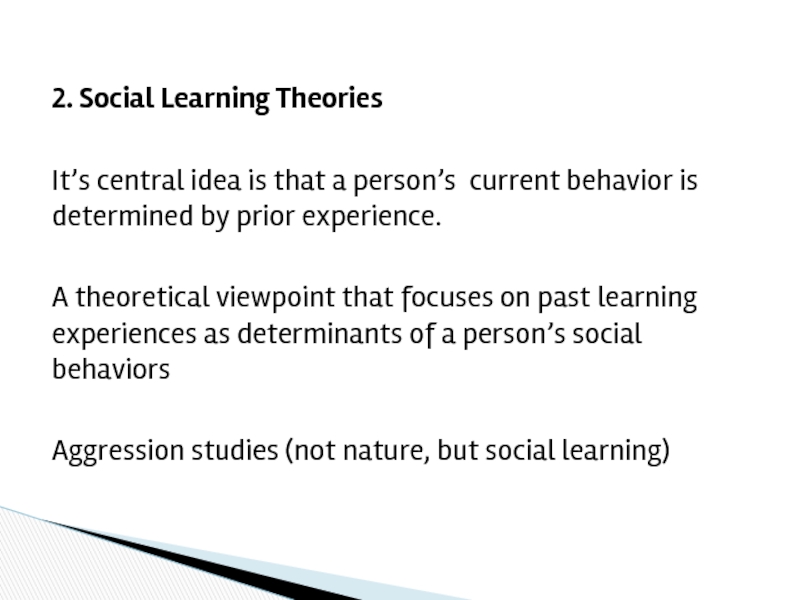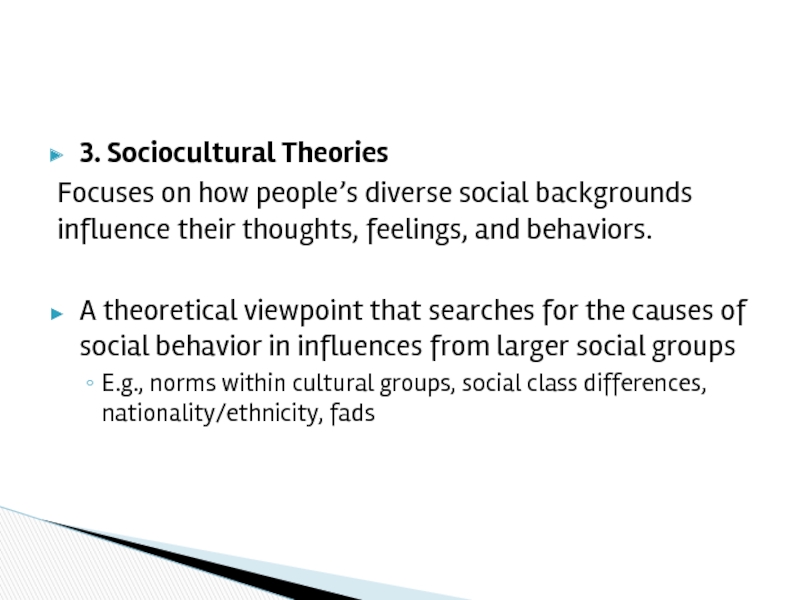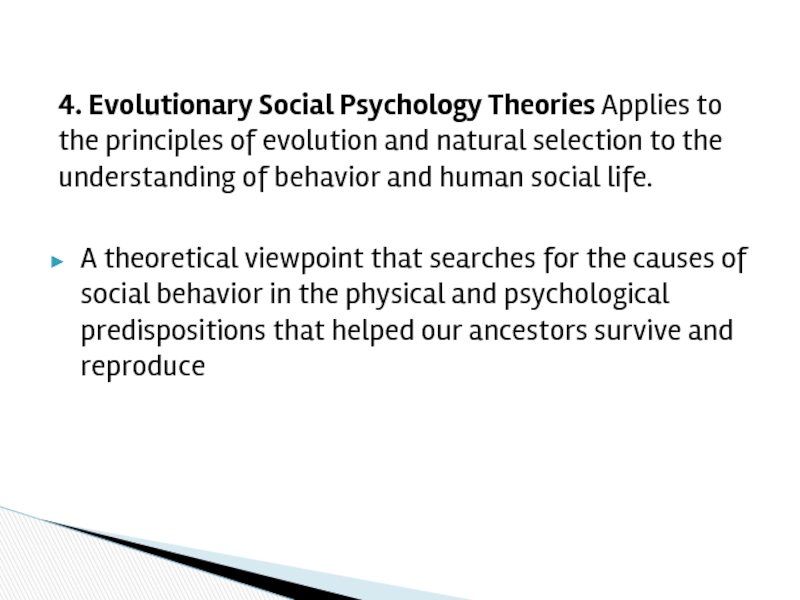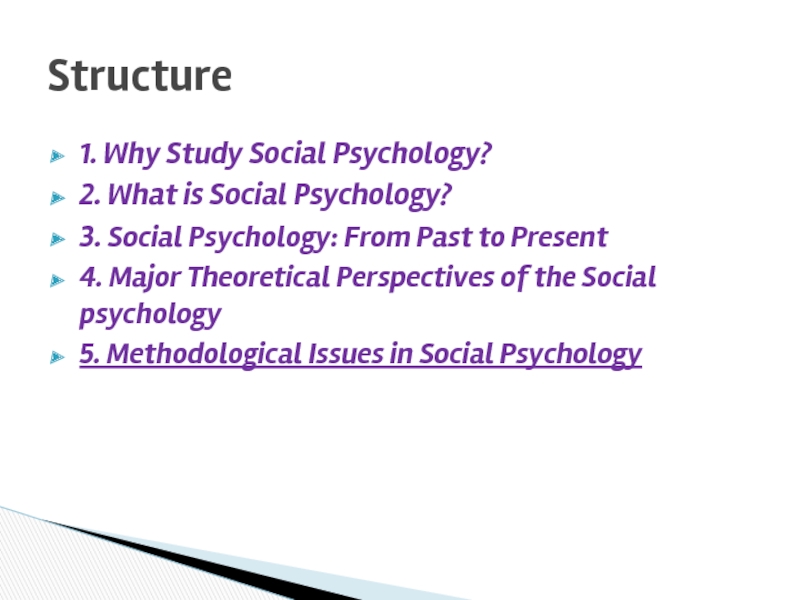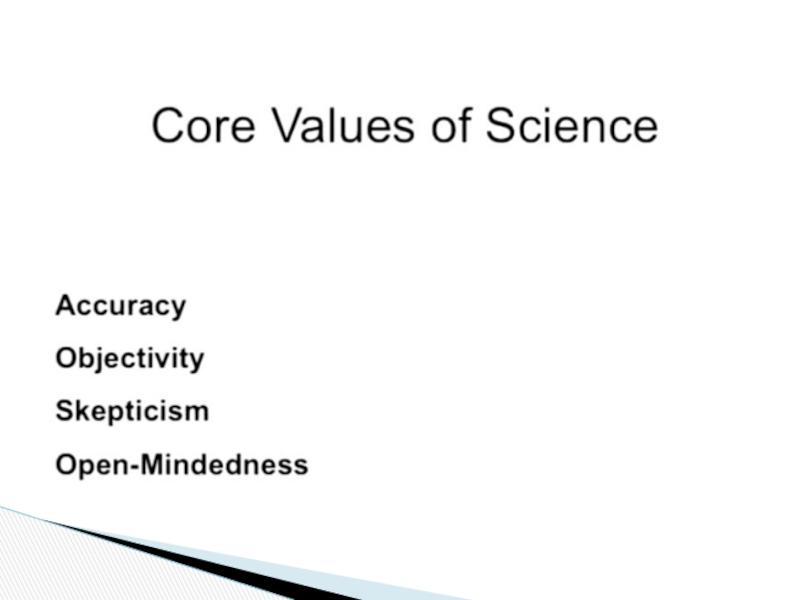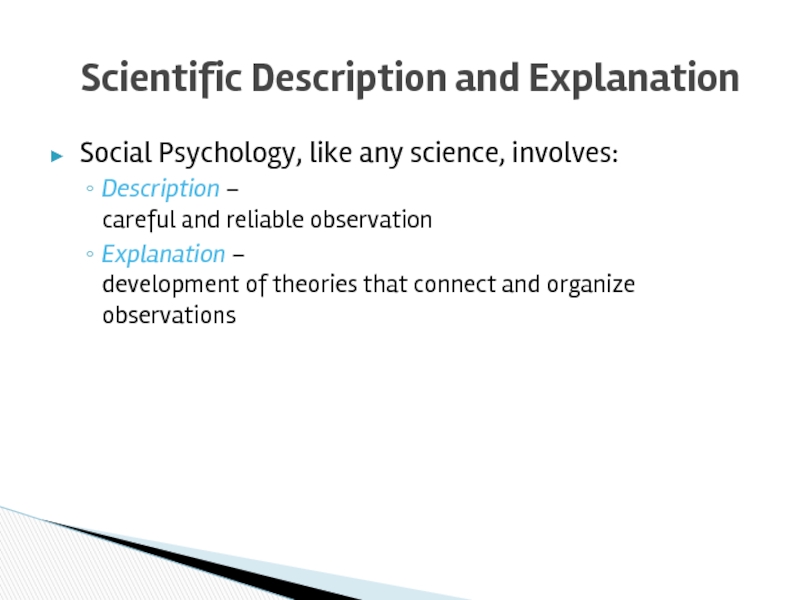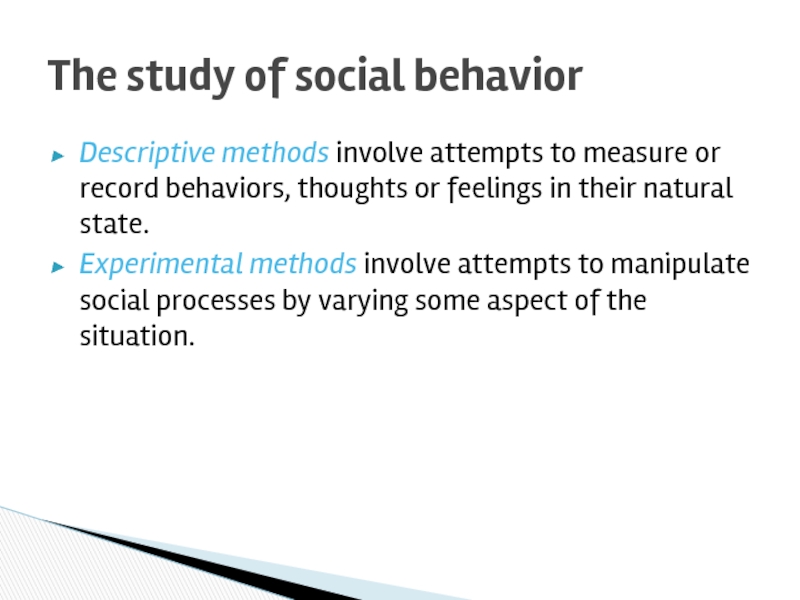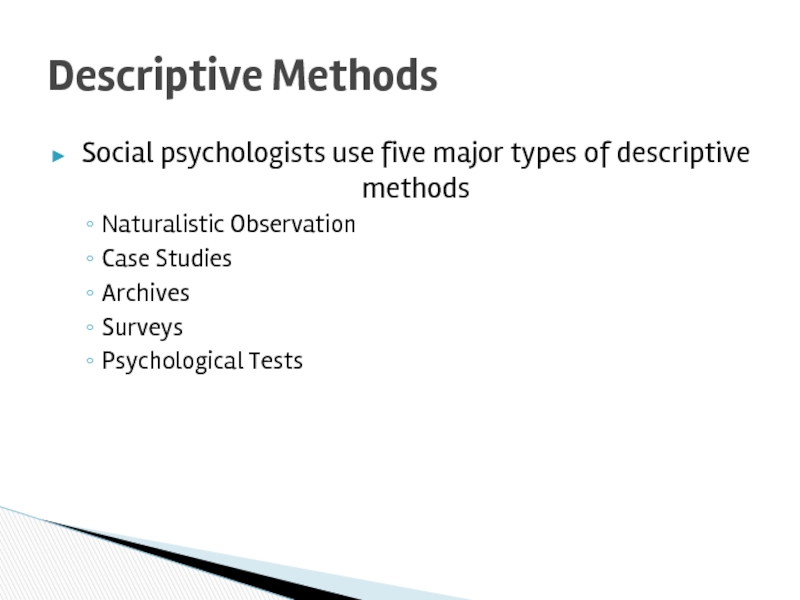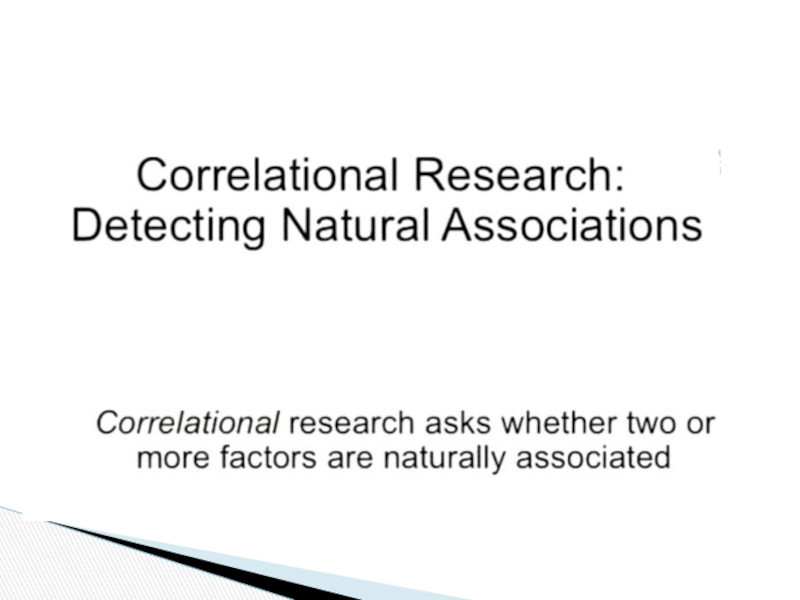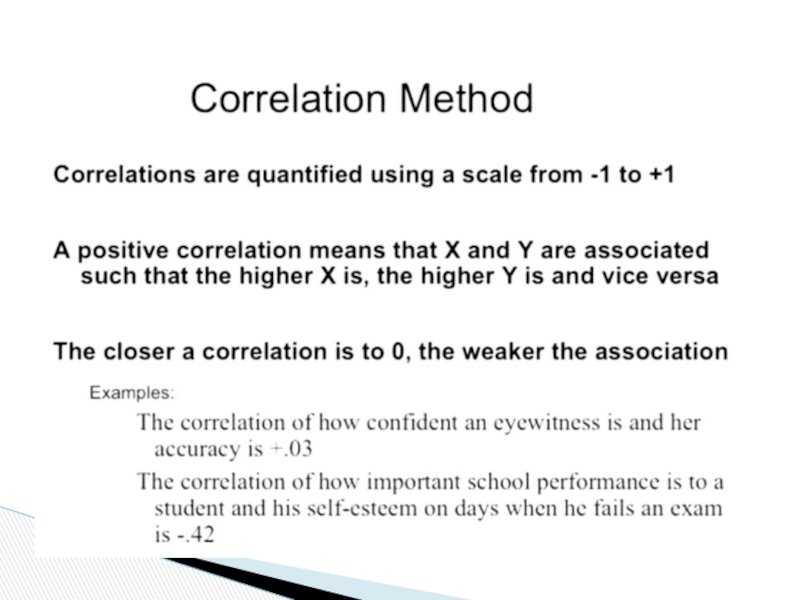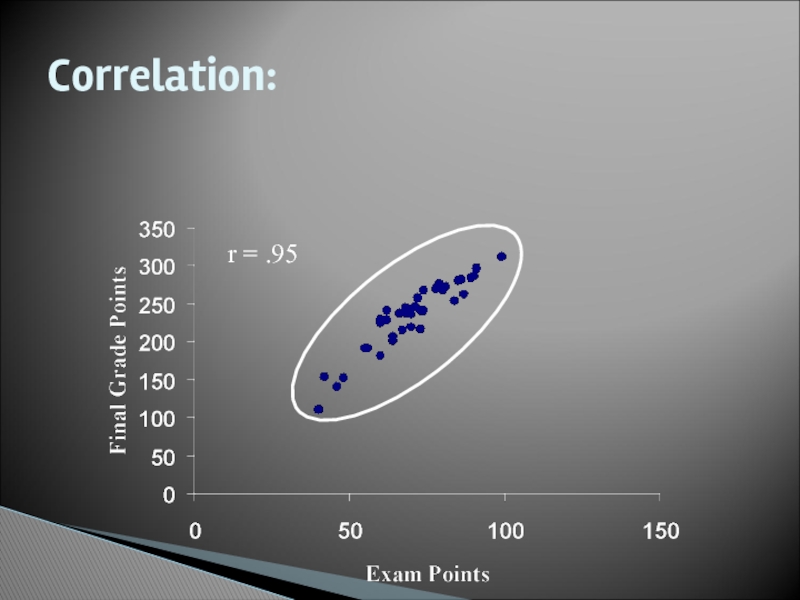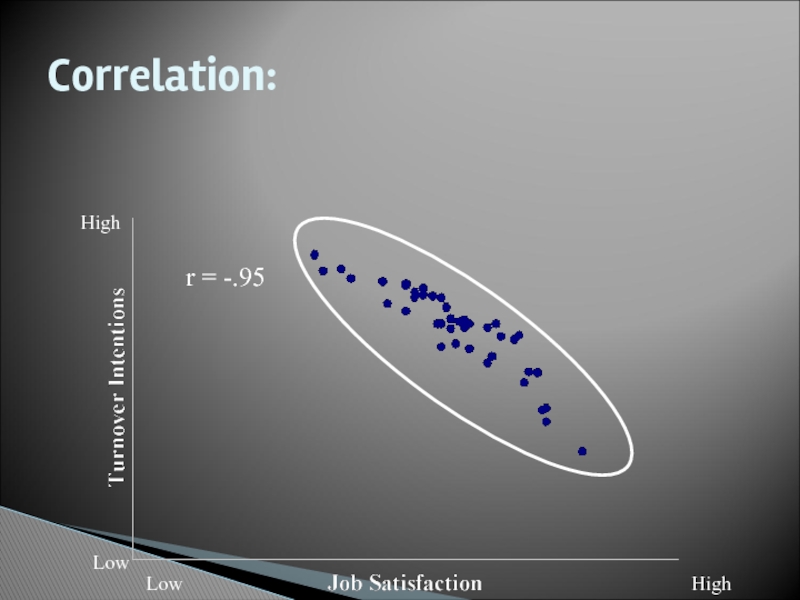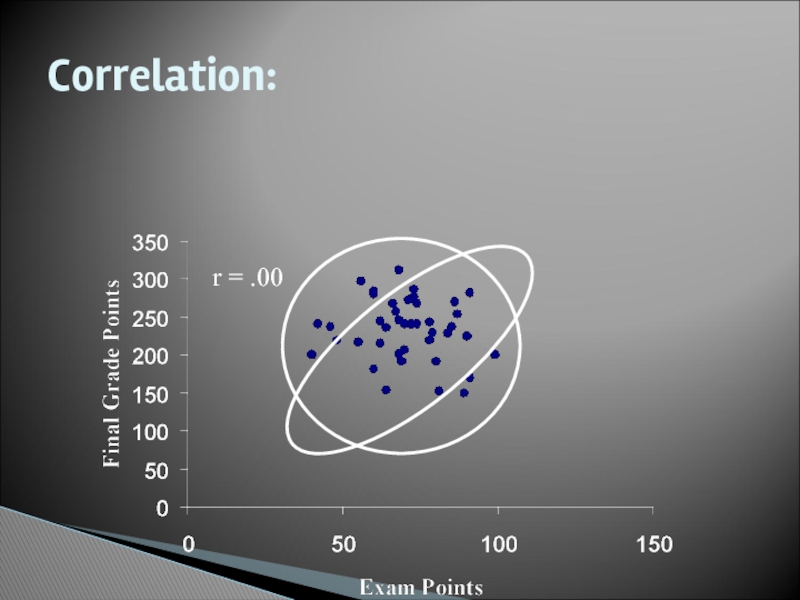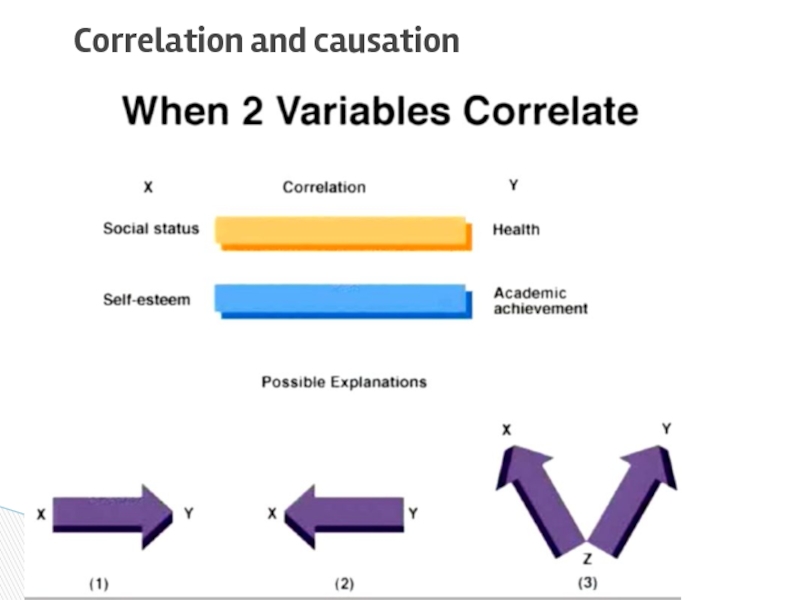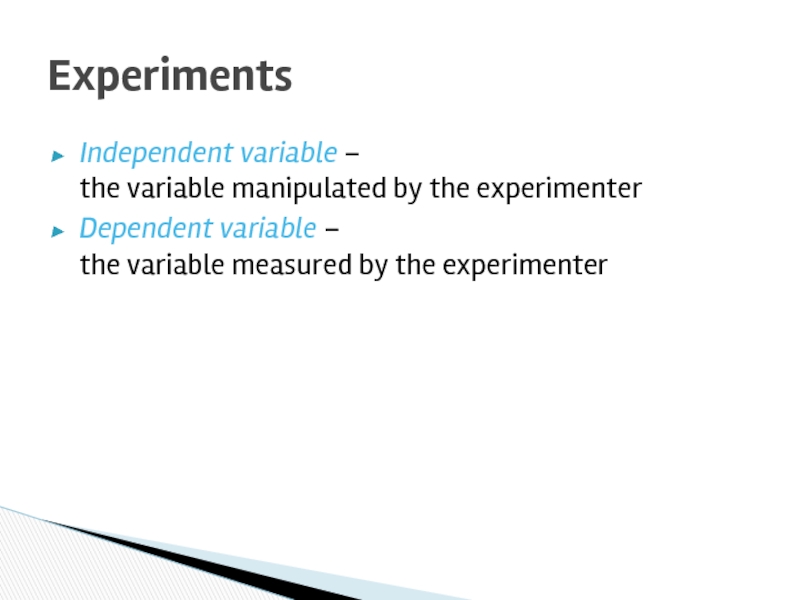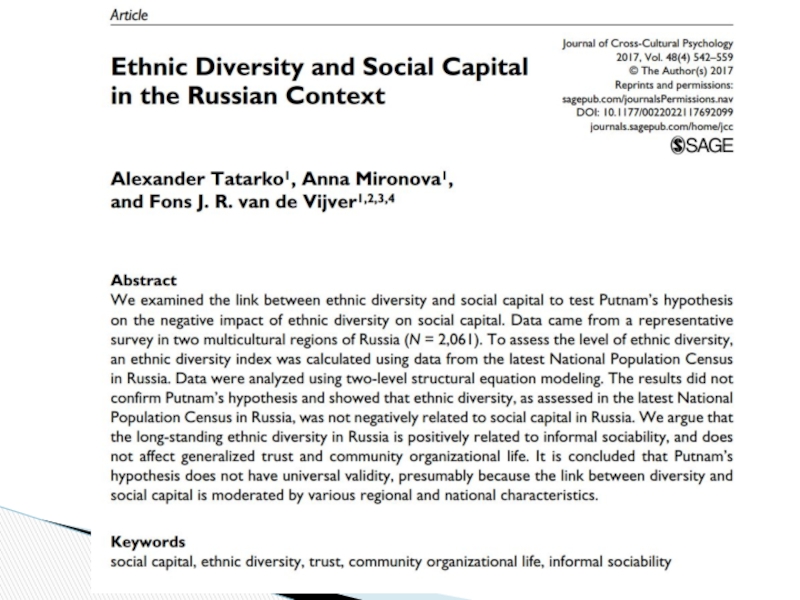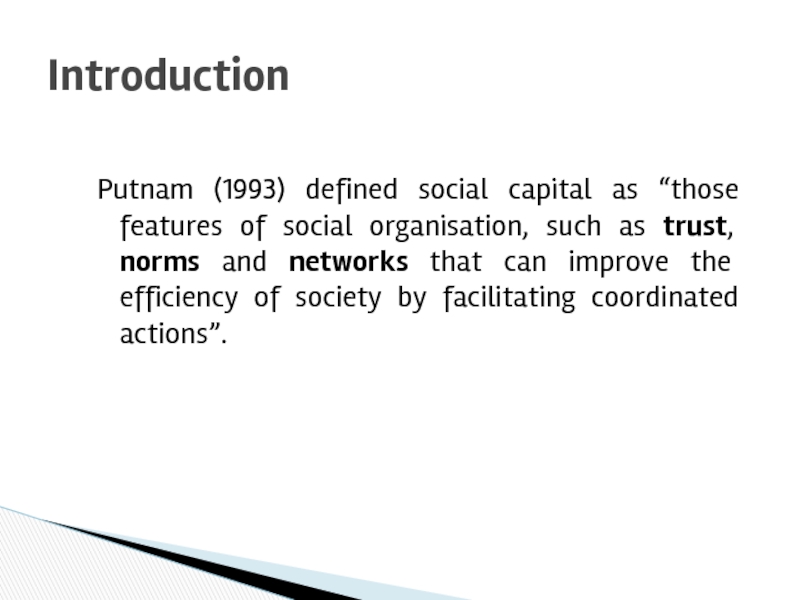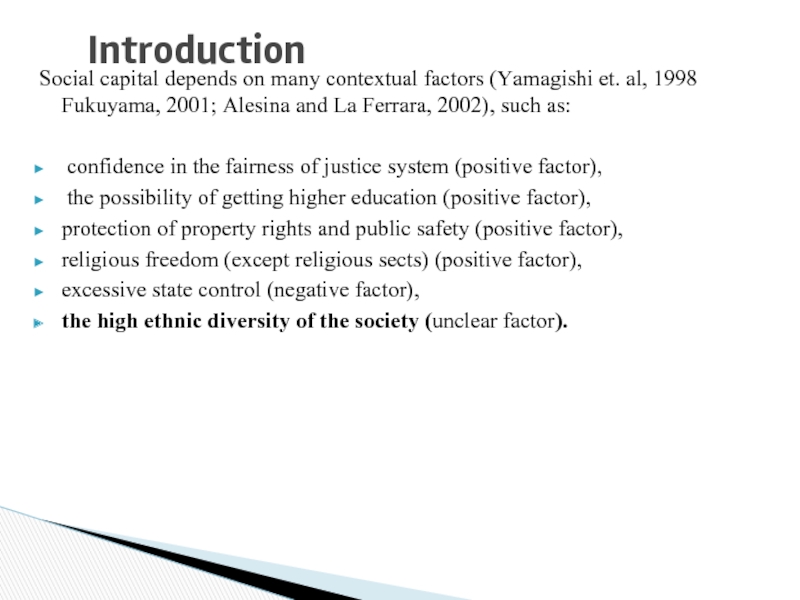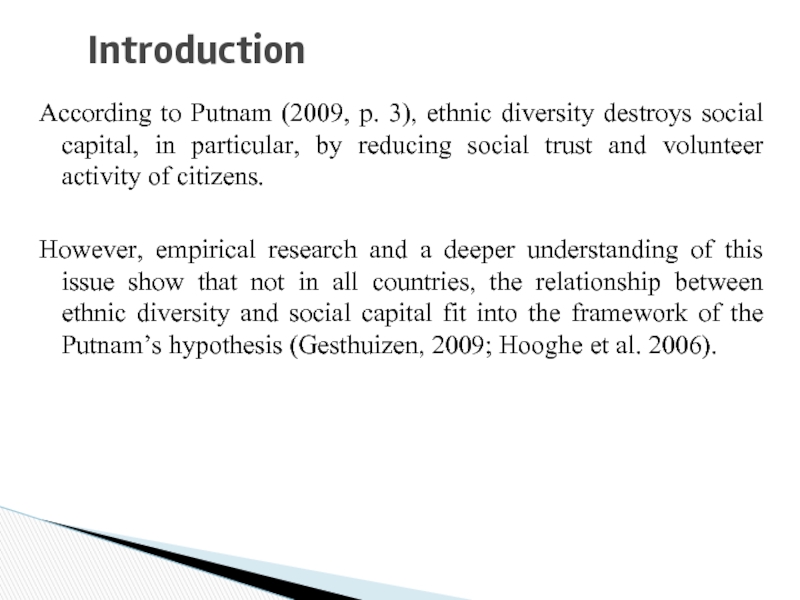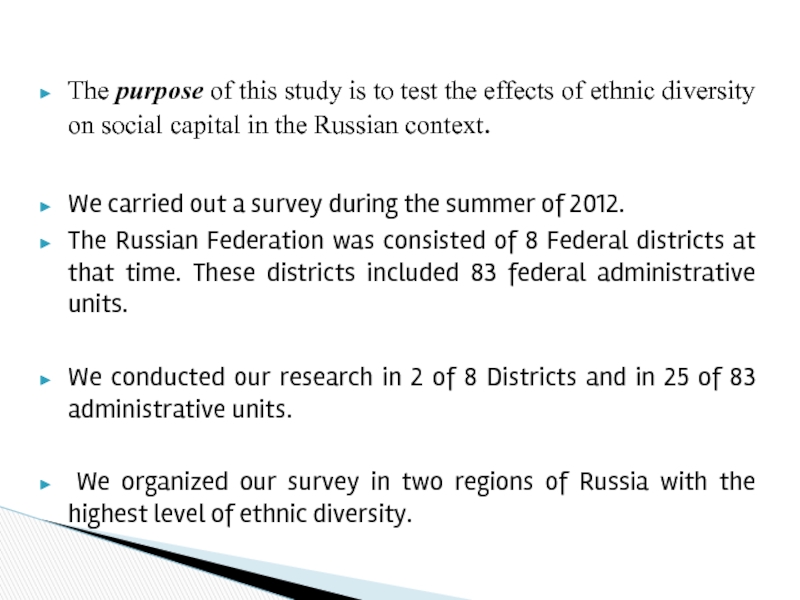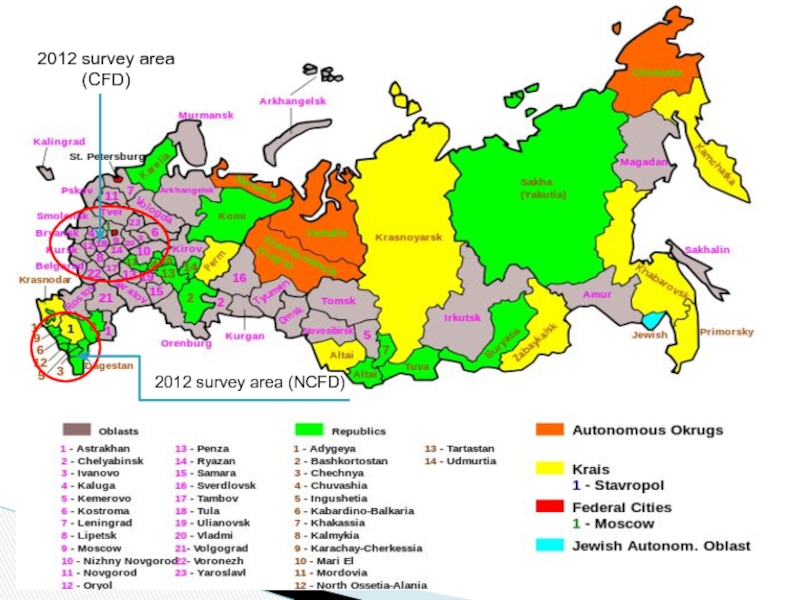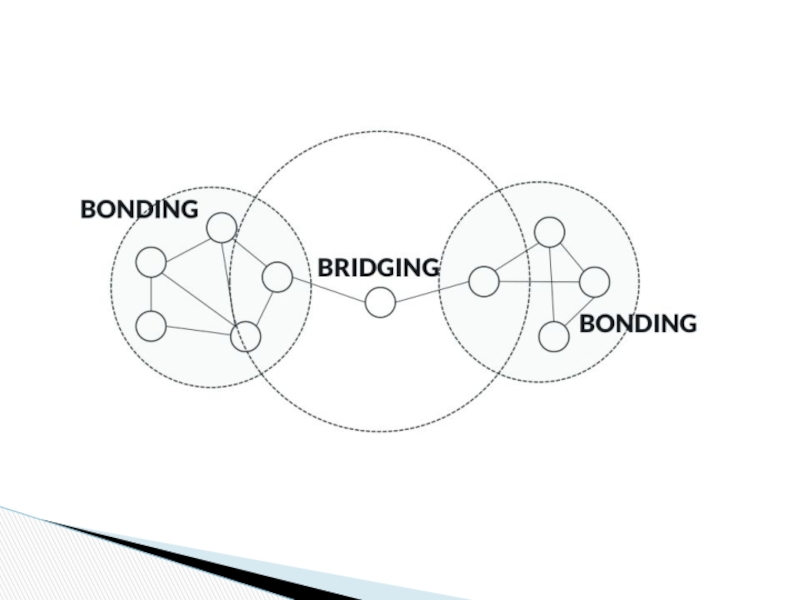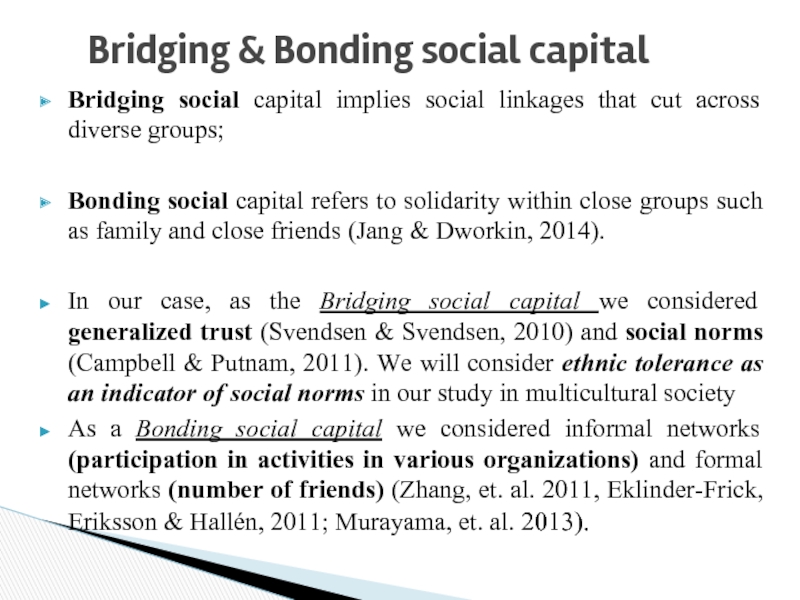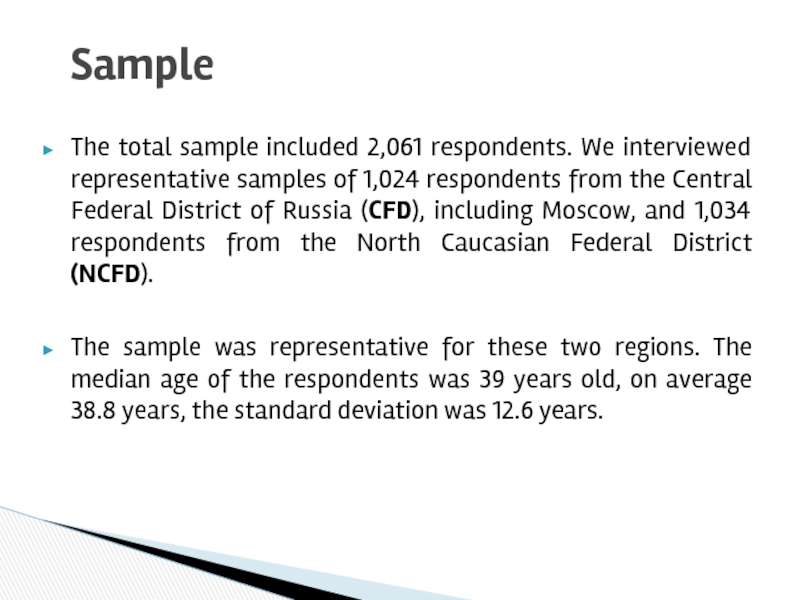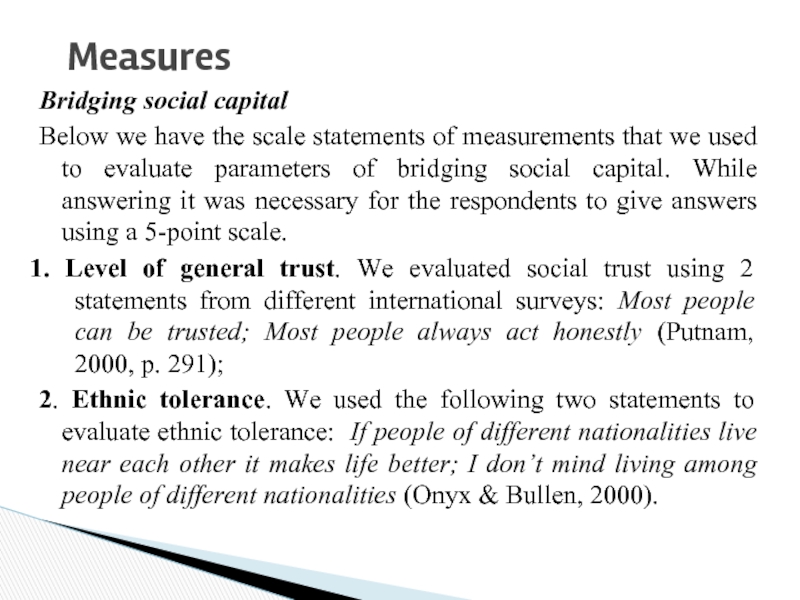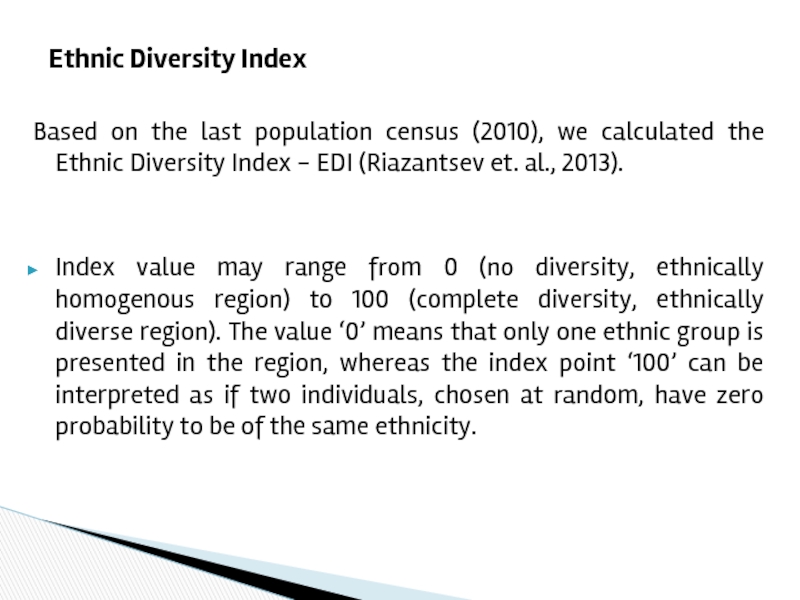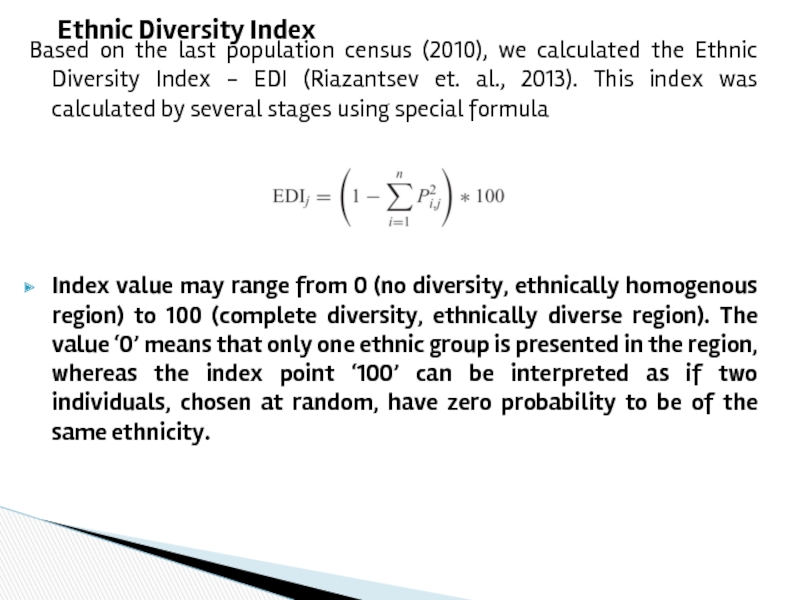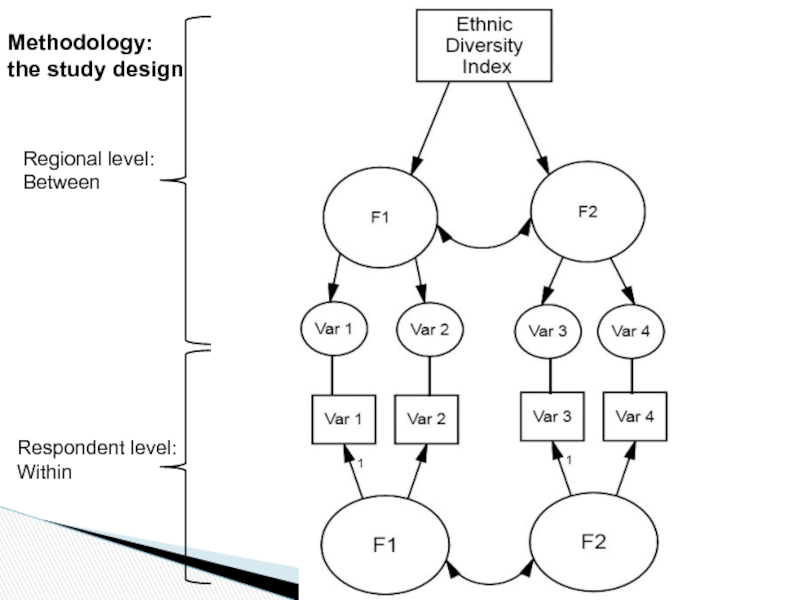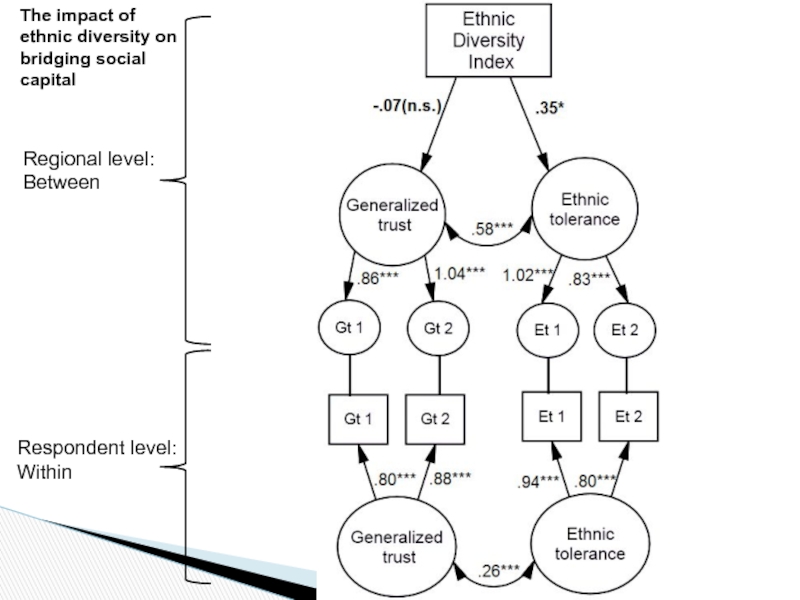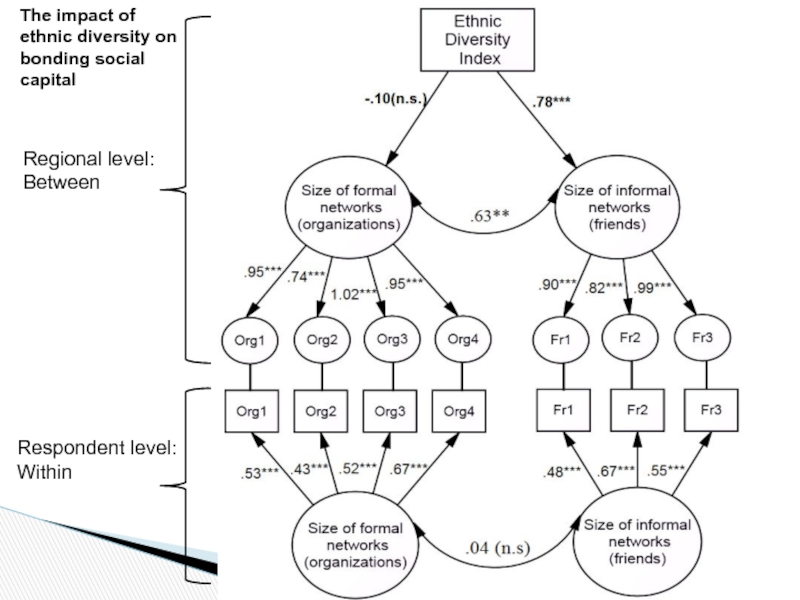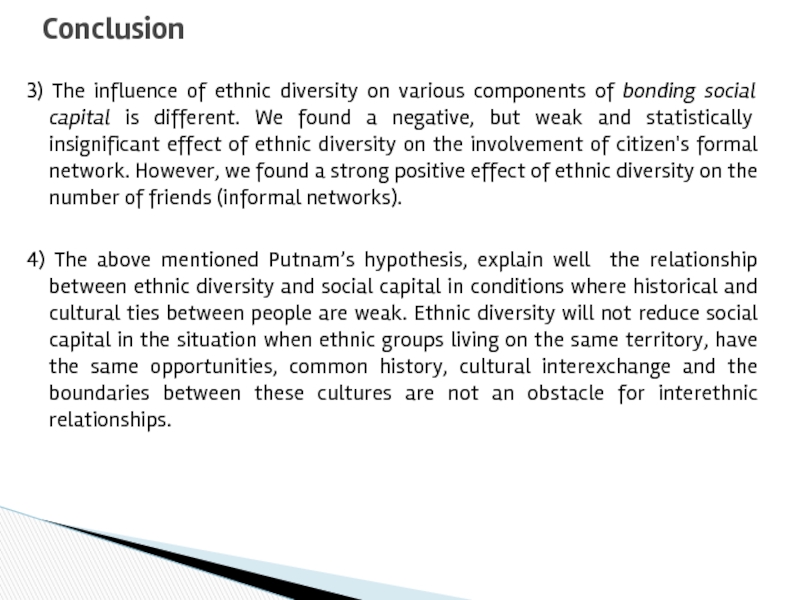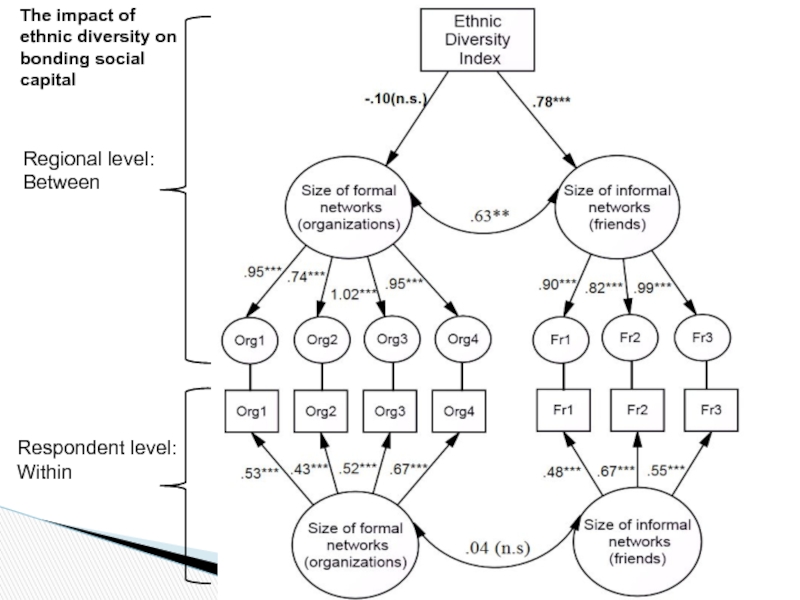- Главная
- Разное
- Дизайн
- Бизнес и предпринимательство
- Аналитика
- Образование
- Развлечения
- Красота и здоровье
- Финансы
- Государство
- Путешествия
- Спорт
- Недвижимость
- Армия
- Графика
- Культурология
- Еда и кулинария
- Лингвистика
- Английский язык
- Астрономия
- Алгебра
- Биология
- География
- Детские презентации
- Информатика
- История
- Литература
- Маркетинг
- Математика
- Медицина
- Менеджмент
- Музыка
- МХК
- Немецкий язык
- ОБЖ
- Обществознание
- Окружающий мир
- Педагогика
- Русский язык
- Технология
- Физика
- Философия
- Химия
- Шаблоны, картинки для презентаций
- Экология
- Экономика
- Юриспруденция
Theory and methodology of modern psychology: презентация
Содержание
- 1. Theory and methodology of modern psychology:
- 2. Theory and methodology of modern psychology:
- 3. Theory and methodology of modern psychology: Advanced social psychology
- 4. Advanced social psychology
- 5. - Lectures and seminars (Anastasia Batkhina
- 6. Course schedule
- 7. Main Textbooks Advanced social psychology. The
- 8. Introduction to Advanced Social psychology Lecture 1
- 9. 1. Why Study Social Psychology? 2.
- 10. 1. Why Study Social Psychology? Structure
- 13. In a survey 3000 British respondents said
- 14. In a survey 3000 British respondents said
- 15. In a survey 3000 British respondents said
- 16. In a survey 3000 British respondents said
- 17. In a survey 3000 British respondents said
- 18. In a survey 3000 British respondents said
- 19. Humans have social needs that social networking
- 20. We are not isolated, we are
- 21. Social psychology is the scientific study of
- 22. 1. Why Study Social Psychology? 2. What is Social Psychology? Structure
- 23. Social psychology has been defined as
- 24. How and what do people think of
- 25. Social psychology is heavily influenced by:
- 26. Social Psychology and Sociology How are they
- 28. Social Psychology and Personality Psychology How are
- 29. Social Psychology and Cognitive Psychology How are
- 30. 1. Why Study Social Psychology? 2.
- 31. Max Ringelmann in the 1880s Conducted rope-pulling
- 32. Norman Triplett in 1898 Noticed that cyclists
- 33. Introduction of Social Psychology (1908) Edward Ross
- 34. Lewin, K. Field theory in
- 35. Who had the most dramatic impact on
- 36. b. The Nazi phenomenon and
- 37. 1. Why Study Social Psychology? 2.
- 38. Major Theoretical Perspectives Social Cognitive Motivational Social Learning Sociocultural Evolutionary
- 39. 1. Social Cognitive Theories and Motivational Theories
- 40. Early social psychology emphasized motivation over cognition,
- 41. It is a view that emphasizes motivations
- 42. The Self-Esteem Maximizer seeks above all to
- 43. Anything that depicts the self in a
- 44. The simple assumption behind this theory is
- 45. The central assumption of the Information Seeker
- 46. The simple view of humans as Information
- 47. The most extensive examination of these issues
- 48. A priority in research and publication in
- 49. For example, one well-established principle goes by
- 50. Human brain consumes a relatively large proportion
- 51. The view that people are pretty much
- 52. One of the guiding texts for this
- 53. 2. Social Learning Theories
- 54. 3. Sociocultural Theories Focuses on how people’s
- 55. 4. Evolutionary Social Psychology Theories Applies
- 56. Evolutionary Social Psychology Theories What drives social
- 57. 1. Why Study Social Psychology? 2.
- 59. Scientific Description and Explanation Social Psychology, like
- 60. The study of social behavior Descriptive methods
- 61. Descriptive Methods Social psychologists use five major
- 64. r = .95 Correlation:
- 65. r = -.95 Low High Low High Correlation:
- 66. r = .00 Correlation:
- 67. Correlation and causation
- 69. Experiments Independent variable – the variable manipulated
- 71. THE PRETEST-POSTTEST CONTROL GROUP DESIGN
- 73. Introduction Putnam (1993) defined social capital
- 74. Introduction Social capital depends on many contextual
- 75. Introduction According to Putnam (2009, p.
- 76. The purpose of this study is
- 77. 2012 survey area (CFD) 2012 survey area (NCFD)
- 80. Bridging & Bonding social capital Bridging social
- 81. Sample The total sample included 2,061 respondents.
- 82. Measures Bridging social capital Below we
- 83. Measures Bonding social capital. 1. The size
- 84. Ethnic Diversity Index Based on the last
- 85. Ethnic Diversity Index Based on the last
- 86. Regional level: Between Methodology: the study design Respondent level: Within
- 87. Ethnic diversity index for 25 regions of
- 88. Regional level: Between The impact of
- 89. Regional level: Between The impact of
- 90. Conclusion 1) Ethnic diversity of the Russia’s
- 91. Conclusion 3) The influence of ethnic diversity
- 92. Regional level: Between The impact of
- 93. Thanks for your attention!
Слайд 5
- Lectures and seminars (Anastasia Batkhina and Dmitri Dubrov).
Anastasia and Dmitri
Слайд 7Main Textbooks
Advanced social psychology. The state of the science” (2010). Ed.
Hogg, M.A. & Vaughan, G.M. 5th Ed. (2008) Social Psychology. London: Arnold.
Handbook of Psychology, Volume 5: Personality and Social Psychology, 2nd Edition (2012) . Irving B. Weiner (Editor-in-Chief), Howard A. Tennen & Jerry M. Suls. Canada: John Wiley & Sons, Inc.
Baumeister, R. F., & Bushman, B. (2014). Social psychology and human nature. Third Edition. Wadsworth Cengage Learning.
Слайд 91. Why Study Social Psychology?
2. What is Social Psychology?
3. Social
4. Major Theoretical Perspectives of the Social psychology
5. Methodological Issues in Social Psychology
Structure
Слайд 13In a survey 3000 British respondents said the top five things
1. sunshine
Слайд 14In a survey 3000 British respondents said the top five things
sunshine,
the Internet,
Слайд 15In a survey 3000 British respondents said the top five things
sunshine,
the Internet,
clean drinking water
Слайд 16In a survey 3000 British respondents said the top five things
sunshine,
the Internet,
clean drinking water
refrigerators, and…..
Слайд 17In a survey 3000 British respondents said the top five things
sunshine,
the Internet,
clean drinking water
refrigerators, and…..
Facebook. (!)
Слайд 18In a survey 3000 British respondents said the top five things
sunshine,
the Internet,
clean drinking water
refrigerators, and…..
Facebook. (!)
WHY?
Do you know, that Mark Zuckerberg studied Psychology and Computer Science at Harvard University?
Слайд 19Humans have social needs that social networking sites like Facebook can
We are social animals
Слайд 20
We are not isolated, we are social animals, constantly influenced by
We are in the social groups and we think – what others would say? (approve or disapprove our behaviour etc.)
So, we are affected by others
We are social animals
Слайд 21Social psychology is the scientific study of how people affect and
Social psychology, can help you understand basic principles of social influence, as well as many other principles of social behavior.
Слайд 23
Social psychology has been defined as the scientific investigation of how
Слайд 24How and what do people think of one another?
How and how
What shapes the way we relate to one another?
Social psychological questions
Слайд 25Social psychology is heavily influenced by:
Sociology
Cognitive psychology (social cognition);
Individual
Social anthropology (cross-cultural psychology)
Social psychology and some scientific close neighbors
Слайд 26Social Psychology and Sociology
How are they different?
Sociology tends to focus on
Social psychology tends to focus on the individual level.
How do the fields intersect?
Often share the same methods and publish in the same journals.
Both can help in understanding societal and immediate factors that influence behavior.
Слайд 28Social Psychology
and Personality Psychology
How are they different?
Personality psychologists are interested in
Social psychologists are interested in how social factors affect most individuals.
How do the fields intersect?
They complement each other.
Do situational factors interact with individual differences?
Слайд 29Social Psychology
and Cognitive Psychology
How are they different?
Cognitive psychologists study mental
processes overall.
Social
How do the fields intersect?
Social cognition has become an important area within social psychology.
Слайд 301. Why Study Social Psychology?
2. What is Social Psychology?
3. Social
Structure
Слайд 31Max Ringelmann in the 1880s
Conducted rope-pulling experiments
Men pulled alone or as
Measured amount of effort
As group size increased, individual effort decreased
The presence of others hurt performance (i.e., social loafing)
Слайд 32Norman Triplett in 1898
Noticed that cyclists who were competing performed better
Decided to test hypothesis that the presence of others would enhance performance
The presence of others enhanced performance (i.e., social facilitation)
Слайд 33Introduction of Social Psychology (1908)
Edward Ross (sociologist)
William McDougall (psychologist)
Influences in Early
Gordon Allport
It’s all about attitudes
Kurt Lewin
Behavior represents an interaction of the person with the situation
Слайд 34
Lewin, K. Field theory in
social science:
Selected theoretical papers.
New
Слайд 35Who had the most dramatic impact on social psychology?
Quite possibly -
Hitler and WWII
a. The Exodus of European Psychologists
Fleeing Nazi Occupied Europe
- brings a Gestalt Perspective to the American
Psychology
- Kurt Lewin, Fritz Heider, Bob Zajonc,
Solomon Asche
Слайд 36
b. The Nazi phenomenon and Holocaust
begged explanation.
- The Authoritarian Personality (Adorno)
-
- Obedience (Milgram)
- Prejudice Reduction (Sherif)
- Aggression (Bandura)
Слайд 371. Why Study Social Psychology?
2. What is Social Psychology?
3. Social
4. Major Theoretical Perspectives of the Social psychology
Structure
Слайд 38Major Theoretical Perspectives
Social Cognitive
Motivational
Social Learning
Sociocultural
Evolutionary
Слайд 391. Social Cognitive Theories and Motivational Theories
Social Cognitive:
A theoretical viewpoint
Motivational Theories:
Focuses on the individual’s own needs and motives.
Слайд 40Early social psychology emphasized motivation over cognition, although that has been
One of the first big ideas in modern social psychology was that people are motivated to seek consistency. This was a dominant view in the late 1950s and the 1960s and has remained influential ever since.
1.1 The Consistency Seeker
Слайд 41It is a view that emphasizes motivations about cognition.
Consistency is
Cognitive dissonance theory
Cognitive balance theory
1.1 The Consistency Seeker
Слайд 42The Self-Esteem Maximizer seeks above all to avoid losing self-esteem.
At
1.2. The Self-Esteem Maximizer
Слайд 43Anything that depicts the self in a bad light and could
Self-awareness theory
The theory of self-comparison
Self-serving bias (a pattern in which people claim credit for success but deny blame for failure) etc.
1.2. The Self-Esteem Maximizer
Слайд 44The simple assumption behind this theory is that it is important
Understanding the social environment is considerably more challenging than understanding the physical environment, and so humans spend much of their time trying to gain information about it. This includes learning and making inferences about other people as well as about social situations and social structures.
1.3. The Information Seeker
Слайд 45The central assumption of the Information Seeker approach was that whenever
Attribution theory, which was one of the dominant theories in social psychology from the late 1960s into the 1980s, took this approach.
1.3. The Information Seeker
Слайд 46The simple view of humans as Information Seekers gave way in
1.4. The Information Processor
Слайд 47The most extensive examination of these issues was provided by Anderson’s
Anderson (1978) believed that people simply averaged separate items of information, and he conducted a vast program of research to demonstrate this for a variety of different kinds of information, including that underlying impression judgments.
1.4. The Information Processor
Слайд 48A priority in research and publication in early social psychology, greatly
The priority was that social psychologists searched for counterintuitive findings that went against what most people assumed and expected. Because research on social cognition that showed that people reached the right conclusion was often not very informative about the inner processes involved, a premium was placed on showing instances in which people came to false conclusions or made other errors. Collected together, these created an image of the human being as a Foolish Mistake Maker.
1.5. The Foolish Mistake Maker
Слайд 49For example, one well-established principle goes by the name of the
1.5. The Foolish Mistake Maker
Слайд 50Human brain consumes a relatively large proportion of human energy (compared
Even so, most of this energy is used unconsciously (because this is more efficient).
Conscious energy is limited and needs to be spend wisely.
There is an ample evidence that stipulated: when people’s capacity for thinking is already preoccupied, they take even more shortcuts to reduce further need for thought.
“Cognitive Miser”
Слайд 51The view that people are pretty much all the same can
The term was chosen to contrast it with the emphasis in personality psychology on individual differences. The underlying theory is that behavior is primarily a response to situations (hence the alternate title of “Situational Responder”).
How people think, feel, and act is a direct result of situational pressures and influences.
1.6. The Nondifferent Individual, or the Situational Responder
Слайд 52One of the guiding texts for this movement was Mischel’s (1968)
Examples: most of experiments in social psychology.
1.6. The Nondifferent Individual, or the Situational Responder
Слайд 53
2. Social Learning Theories
It’s central idea is that a person’s
A theoretical viewpoint that focuses on past learning experiences as determinants of a person’s social behaviors
Aggression studies (not nature, but social learning)
Слайд 543. Sociocultural Theories
Focuses on how people’s diverse social backgrounds influence their
A theoretical viewpoint that searches for the causes of social behavior in influences from larger social groups
E.g., norms within cultural groups, social class differences, nationality/ethnicity, fads
Слайд 55
4. Evolutionary Social Psychology Theories Applies to the principles of evolution
A theoretical viewpoint that searches for the causes of social behavior in the physical and psychological predispositions that helped our ancestors survive and reproduce
Слайд 56Evolutionary Social Psychology Theories
What drives social behavior?
Genetic predispositions inherited from our
The tendency to automatically recognize an angry face
The tendency for mothers to feel protective of their children
E.g. prosocial behaviour
Слайд 571. Why Study Social Psychology?
2. What is Social Psychology?
3. Social
4. Major Theoretical Perspectives of the Social psychology
5. Methodological Issues in Social Psychology
Structure
Слайд 59Scientific Description and Explanation
Social Psychology, like any science, involves:
Description –
careful
Explanation – development of theories that connect and organize observations
Слайд 60The study of social behavior
Descriptive methods involve attempts to measure or
Experimental methods involve attempts to manipulate social processes by varying some aspect of the situation.
Слайд 61Descriptive Methods
Social psychologists use five major types of descriptive methods
Naturalistic Observation
Case
Archives
Surveys
Psychological Tests
Слайд 69Experiments
Independent variable –
the variable manipulated by the experimenter
Dependent variable –
the variable
Слайд 73Introduction
Putnam (1993) defined social capital as “those features of social organisation,
Слайд 74Introduction
Social capital depends on many contextual factors (Yamagishi et. al, 1998
confidence in the fairness of justice system (positive factor),
the possibility of getting higher education (positive factor),
protection of property rights and public safety (positive factor),
religious freedom (except religious sects) (positive factor),
excessive state control (negative factor),
the high ethnic diversity of the society (unclear factor).
Слайд 75Introduction
According to Putnam (2009, p. 3), ethnic diversity destroys social capital,
However, empirical research and a deeper understanding of this issue show that not in all countries, the relationship between ethnic diversity and social capital fit into the framework of the Putnam’s hypothesis (Gesthuizen, 2009; Hooghe et al. 2006).
Слайд 76
The purpose of this study is to test the effects of
We carried out a survey during the summer of 2012.
The Russian Federation was consisted of 8 Federal districts at that time. These districts included 83 federal administrative units.
We conducted our research in 2 of 8 Districts and in 25 of 83 administrative units.
We organized our survey in two regions of Russia with the highest level of ethnic diversity.
Слайд 80Bridging & Bonding social capital
Bridging social capital implies social linkages that
Bonding social capital refers to solidarity within close groups such as family and close friends (Jang & Dworkin, 2014).
In our case, as the Bridging social capital we considered generalized trust (Svendsen & Svendsen, 2010) and social norms (Campbell & Putnam, 2011). We will consider ethnic tolerance as an indicator of social norms in our study in multicultural society
As a Bonding social capital we considered informal networks (participation in activities in various organizations) and formal networks (number of friends) (Zhang, et. al. 2011, Eklinder-Frick, Eriksson & Hallén, 2011; Murayama, et. al. 2013).
Слайд 81Sample
The total sample included 2,061 respondents. We interviewed representative samples of
The sample was representative for these two regions. The median age of the respondents was 39 years old, on average 38.8 years, the standard deviation was 12.6 years.
Слайд 82Measures
Bridging social capital
Below we have the scale statements of measurements
1. Level of general trust. We evaluated social trust using 2 statements from different international surveys: Most people can be trusted; Most people always act honestly (Putnam, 2000, p. 291);
2. Ethnic tolerance. We used the following two statements to evaluate ethnic tolerance: If people of different nationalities live near each other it makes life better; I don’t mind living among people of different nationalities (Onyx & Bullen, 2000).
Слайд 83Measures
Bonding social capital.
1. The size of formal networks: membership in organizations
2. The size of informal networks: friends (Häuberer, 2011; Gaag, 2005; Verhaeghe & Tampubolon, 2012). We measured the informal network of the respondent’s friends by asking about his or her number of friends in the workplace, in the neighborhood and other friends.
Слайд 84Ethnic Diversity Index
Based on the last population census (2010), we calculated
Index value may range from 0 (no diversity, ethnically homogenous region) to 100 (complete diversity, ethnically diverse region). The value ‘0’ means that only one ethnic group is presented in the region, whereas the index point ‘100’ can be interpreted as if two individuals, chosen at random, have zero probability to be of the same ethnicity.
Слайд 85Ethnic Diversity Index
Based on the last population census (2010), we calculated
Index value may range from 0 (no diversity, ethnically homogenous region) to 100 (complete diversity, ethnically diverse region). The value ‘0’ means that only one ethnic group is presented in the region, whereas the index point ‘100’ can be interpreted as if two individuals, chosen at random, have zero probability to be of the same ethnicity.
Слайд 88
Regional level:
Between
The impact of ethnic diversity on bridging social capital
Respondent level:
Within
Слайд 89
Regional level:
Between
The impact of ethnic diversity on bonding social capital
Respondent level:
Within
Слайд 90Conclusion
1) Ethnic diversity of the Russia’s regions is either a neutral
2) Bridging social capital of the considered regions of Russia does not suffer from their ethnic diversity, although the negative effects of ethnic diversity on social capital are predicted in the previous studies. We found that ethnic diversity does not have a statistically significant effect on generalized trust and have a positive effect on ethnic tolerance.
Слайд 91Conclusion
3) The influence of ethnic diversity on various components of bonding
4) The above mentioned Putnam’s hypothesis, explain well the relationship between ethnic diversity and social capital in conditions where historical and cultural ties between people are weak. Ethnic diversity will not reduce social capital in the situation when ethnic groups living on the same territory, have the same opportunities, common history, cultural interexchange and the boundaries between these cultures are not an obstacle for interethnic relationships.

